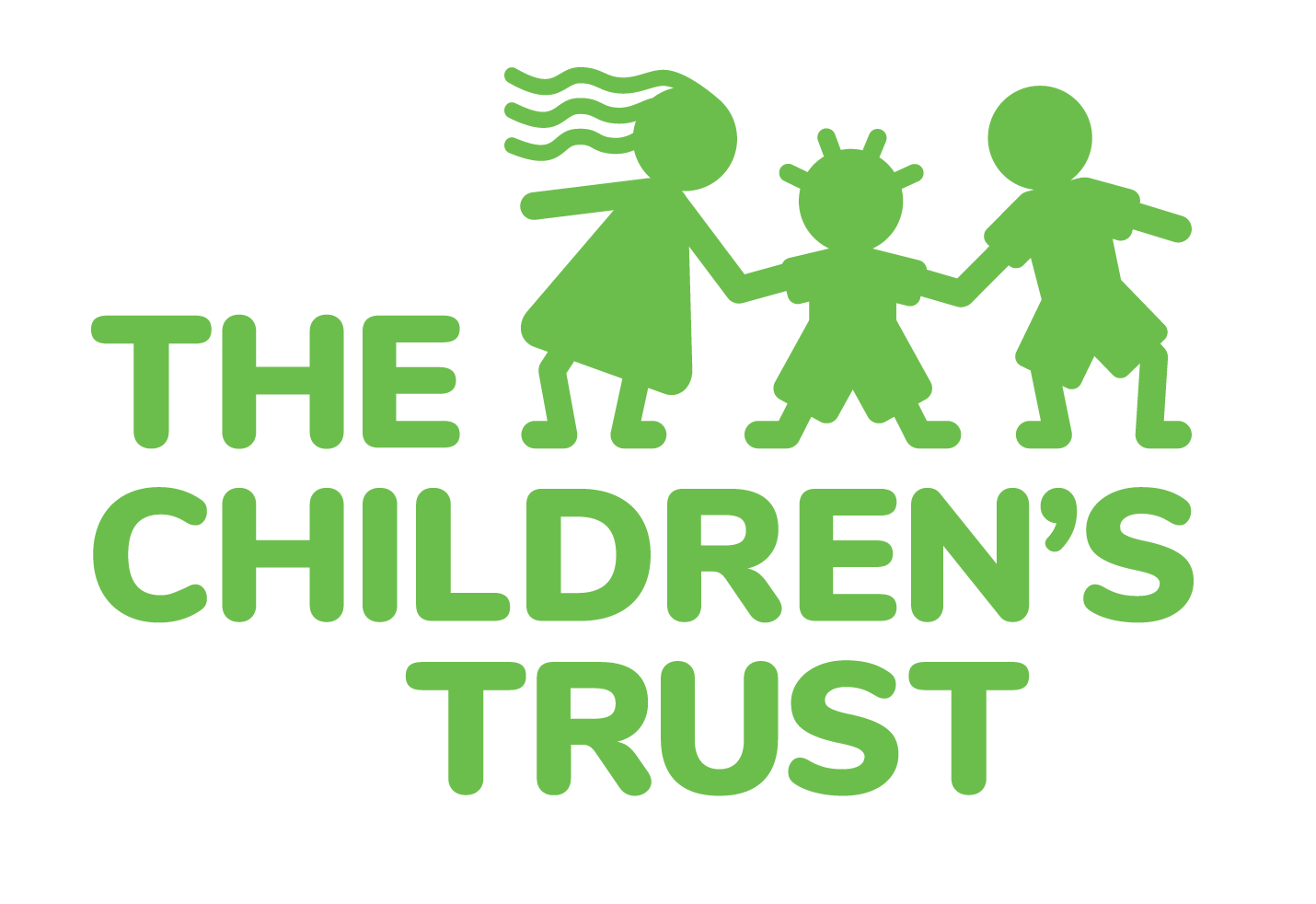I Love You More Than Christmas
Written by Ellie Hattie, Illustrated by Tim Warnes
There is excitement in the air at the Bear household. Christmas is just around the corner! Little Bear joyously announces just how much he loves Christmas as the family gets ready for the big day. There is something else that he loves more than Christmas, but he keeps getting interrupted by all the festivities. Mrs. Mail Carrier brings Christmas cards from Grandma and Great Auntie Sue. Daddy Bear brings the tallest, greenest tree you’ll ever see, and Mommy Bear gathers the family to decorate some delicious Christmas treats. And Little Bear listens to carolers singing cheerfully, celebrating the spirit of Christmas.
As Little Bear enjoys time with Mommy and Daddy Bear, it becomes clear what he loves more than Christmas. A wonderfully warm story, I Love You More Than Christmas showcases the importance of the love and family during the holidays. The illustrations of the Bear family and the warm brown and blue colors throughout the story create a cozy atmosphere. (Ages 3 - 7 years)
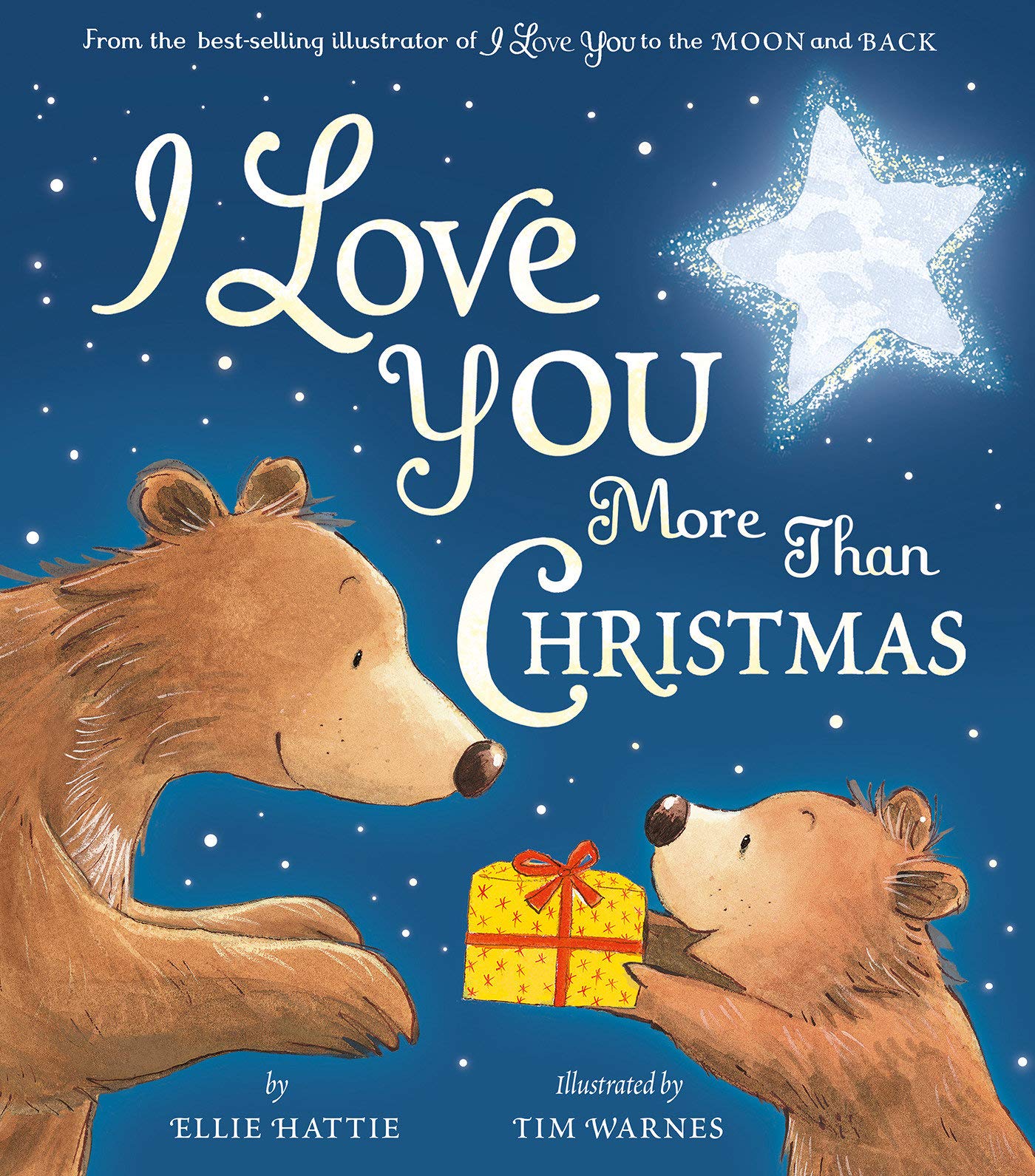
When the Snow is Deeper Than My Boots are Tall
Written by Jean Reidy, Illustrated by Joey Chou
The first big snowfall signals the arrival of winter. A child gets ready to have some fun in the snow with his friends, a playful dog and cat duo. As the child zips up his jacket and gets ready to play, the snow gets deeper. Through snowball fights and snowman creations, the snow gets even deeper. Eventually, the snow gets so deep that the child’s parents swoop in and scoop them up. The family enjoys the rest of the day together, ending up in the cozy home filled with burning logs and hot cocoa.
With an up-tempo rhyming text, When the Snow is Deeper Than My Boots Are Tall is a perfect read aloud that will be enjoyed by both children and parents alike. The bright and sparkling images of the main character and their surroundings pair well with the fast-paced text. (Ages 4 - 8 years)

Archie Celebrates Diwali
Written by Mitali Banerjee Ruths, Illustrated by Parwinder Singh
Archana (who goes by Archie) wants everything to be perfect for her family’s spectacular Diwali celebration. This year, she’s invited all her friends from school to take part in the celebration. But her friends have never heard of Diwali before! Being her favorite holiday, she wants to show her friends how wonderful Diwali, the Festival of Lights, truly is. She tidies up the front entrance including plugging in the lights, fixing a smudge on the rangoli, and adding diyas along the walkway.
She wants everything to be perfect. What if the curry that her Dida made is too spicy or if her Poppy Uncle makes too many jokes in front of her friends? Will her friends like her lehenga? To make things worse, a storm ruins the perfect decorations on the front entrance. When the power goes out, everyone gathers to eat some delicious Indian cuisine. It also prompts her friends to ask what Diwali is about. In the end, it was a wonderful Diwali celebration after all!
Archie Celebrates Diwali is a great way to introduce the Diwali holiday to children. It includes a more detailed section on how and why Diwali is celebrated, as well as a brief summary of the Story of Ramayana which is one of the most popular Diwali stories. There’s also a glossary on the different decorations, food, clothing, and other words that are discussed in the story. The bright illustrations go beautifully with a story about the Festival of Lights. (Ages 3 - 7 years)
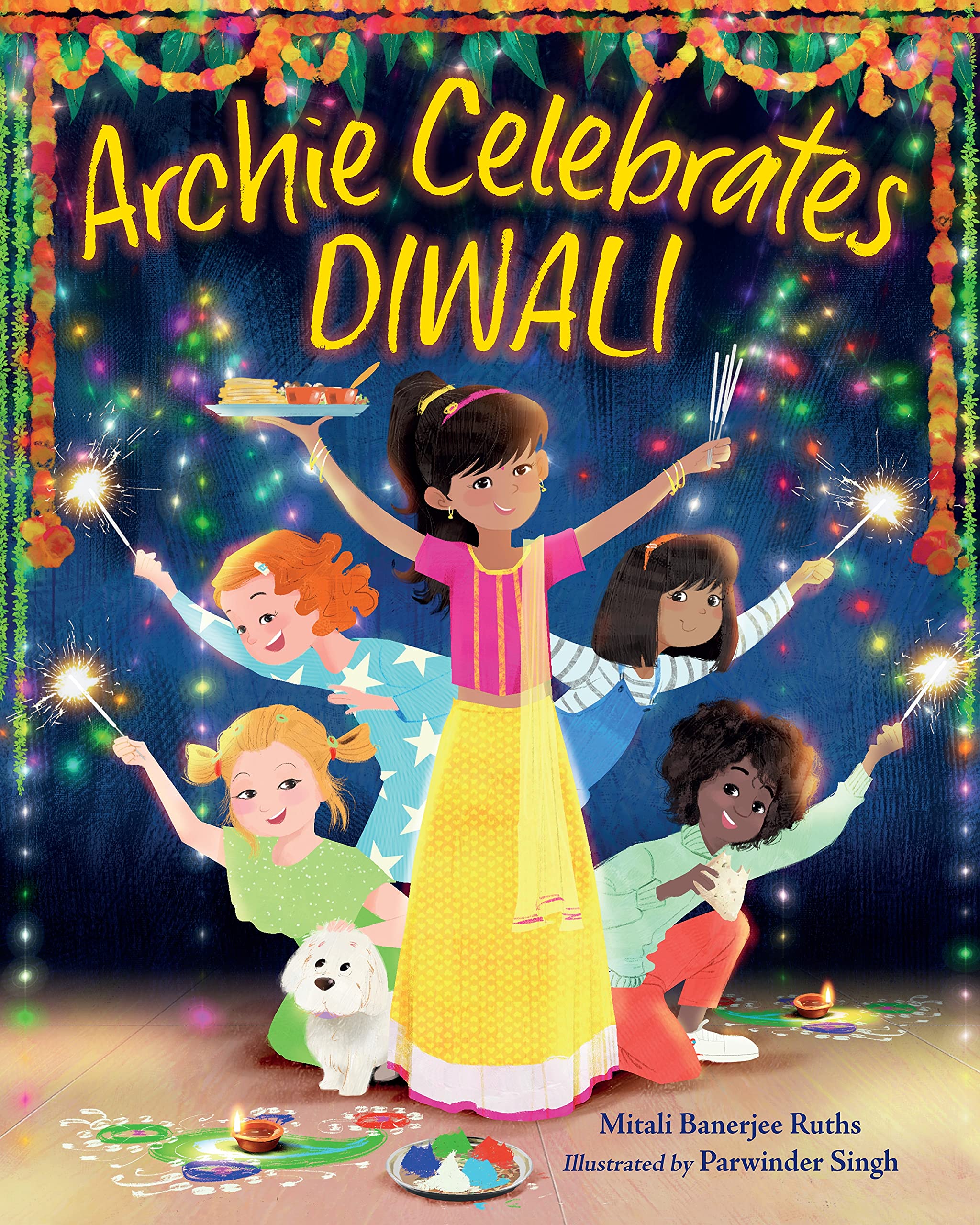
The Eight Knights of Hanukkah
Written by Leslie Kimmelman, Illustrated by Galia Bernstein
The Eights Knights of Hanukkah set out to do great deeds of awesome kindness and stupendous bravery at the behest of Lady Sadie, their mother. It’s the last night of Hanukkah and preparations for the day are being thwarted by a dragon named Dreadful. Sir Isabella and Sir Rugelach are seen looking, chasing, and attempting to capture the knight throughout the story. Meanwhile, the first knight helps a boy by creating a new dreidel after his was scorched. The second knight helps a fair lady peel potatoes so she can make Hanukkah latkes. And on it goes. All eight knights perform good deeds and acts of bravery. The day ends with all set right with the Hanukkah celebration including an unexpected guest.
The Eight Knights of Hanukkah highlights the importance of performing good deeds in the Jewish religion. It’s done so in a humorous, lighthearted way with a medieval twist. The author even wrote a section on the tradition of Hanukkah and why it is important to the Jewish people. The characters are drawn in a cartoonish style which lends itself to the medieval tale. (Ages 4 - 8 years)
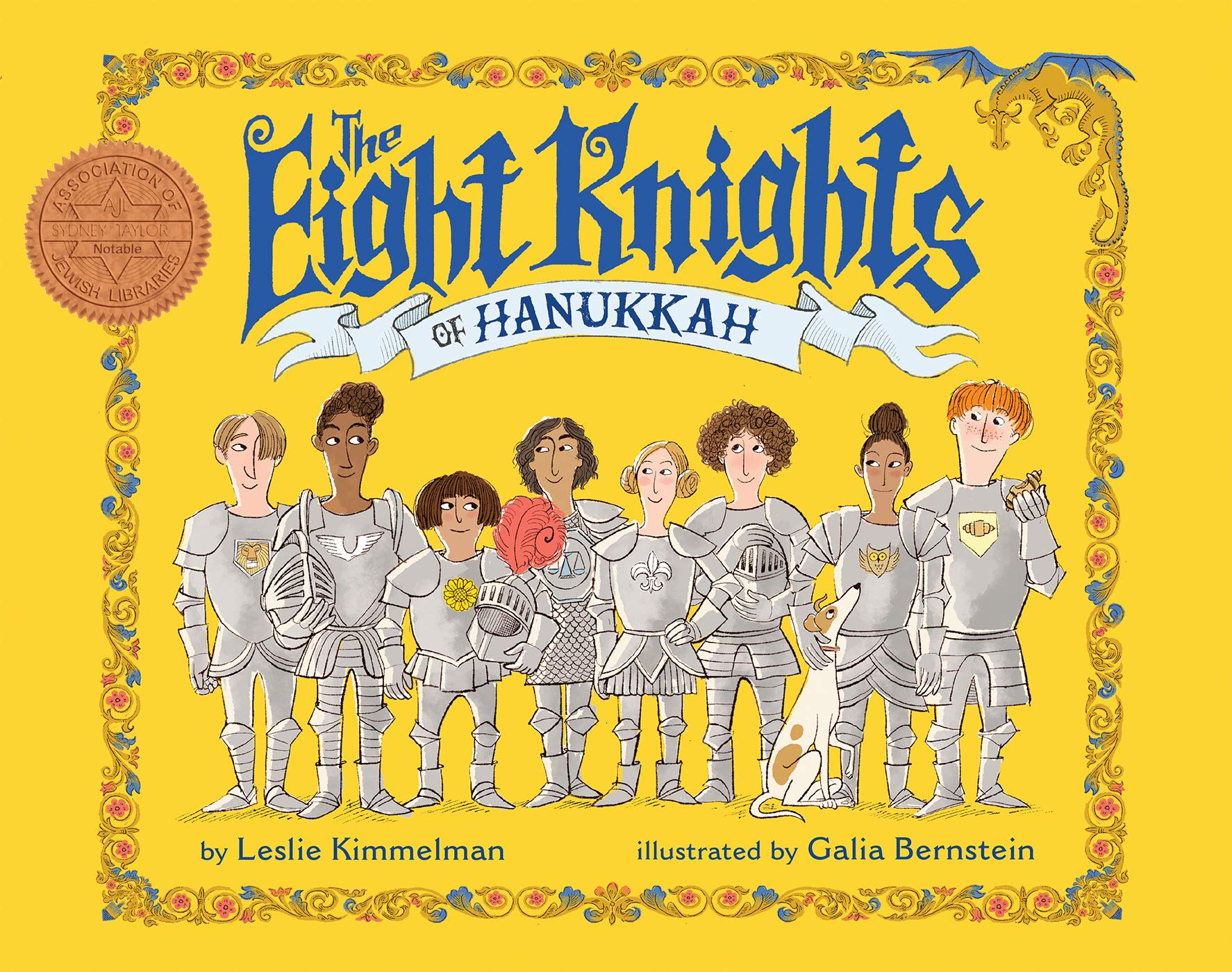
A Sled for Gabo
Written by Emma Otheguy, Illustrated by Ana Ramirez Gonzalez
On the frosty first day of winter, Gabo wakes up to see kids from his new school playing with their sleds in the snow. He doesn’t have a sled or even winter clothes. But his mom finds a way to improvise with what they have so he can go out and play. He visits all his neighbors who ask him why he isn’t playing with the others, but he says he is much too shy to play with other kids his age. He plays with the cat Misifú instead. He also receives a slice of mango from señora Tobón and contemplates sharing a piece of leftover Christmas turrón with a new friend. With all that shyness he is still able to greet neighbors and family. He eventually forgets about being shy and enjoys his time with a new friend.
A Sled for Gabo has a sense of community and kindness. Gabo’s family might not have enough to give him a sled like the other kids, but the community still finds a way for him to feel included. Spanish words and descriptions of Spanish treats are described throughout. And what brings people together more than dulce de Leche? The illustrations for A Sled for Gabo are colorful and have a whimsical, painterly look to them. (Ages 4 - 8 years)
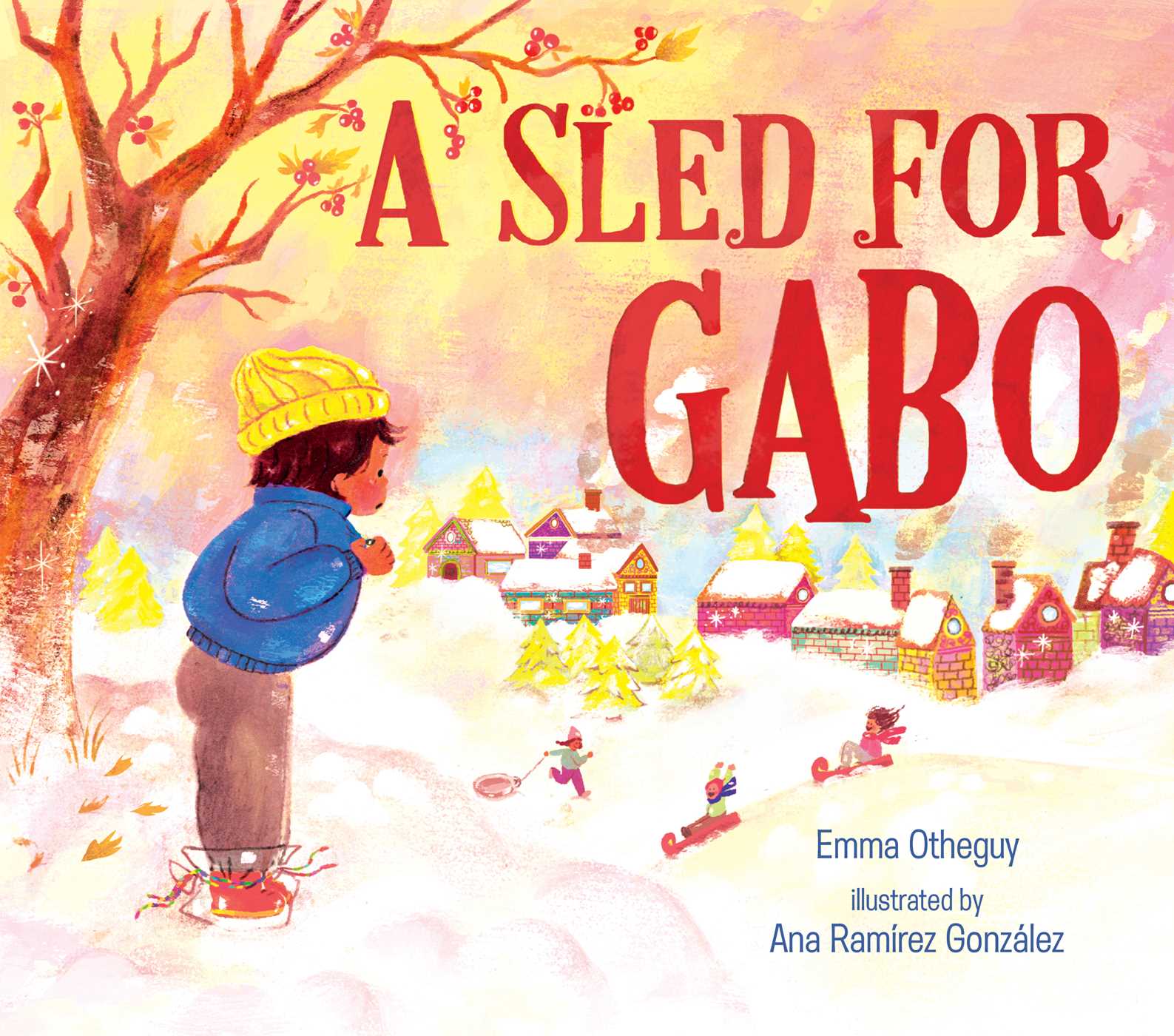
November
This is the time of year when giving “thanks” becomes a central part of our daily lives. Thanksgiving is around the corner, but don’t wait until the end of the month to get your kids into the spirit. Our selection of books in November celebrate community through kindness, sharing, and maybe a slice of pie or two!
Kind: A Book About Kindness
Written by Alison Green, Illustrated by Alex Scheffler
Making the world a kinder place isn’t hard to do if we all pitch in. This delightful book shows us how kindness can start by smiling at others. Listening, hugging and holding someone’s hand when they are lonely or sad is another way to show kindness.
There are so many good reasons to be and act kind, and this book explores many of them like including others when we play or caring for someone when they are hurt. Understanding and generosity are two other needs that can be offered to those in need.
The charming artwork of animals engaged in acts of kindness in Kind is illustrated by a group of well-known creators including Alex Scheffler, the award-winning author and illustrator of many titles including Gruffalo, Stick Man, and Zog. Scheffler also writes the forward, with an introduction to the Three Peas charity for refugees. Writer Alison Green is also the author of The Fox in the Dark.

Pearl and Squirrel Give Thanks
Written by Cassie and Ryan Ehrenberg, Illustrated by Ryan Ehrenberg
In this heart-warming and simple story about thankfulness for friends and family, we meet Pearl and Squirrel – perfect buddies and perfect opposites. They live in a box by the old corner store and roam the city streets together. Feeling hungry on Thanksgiving morning, they head out to meet Stan the food cart man, who always has something to share. During this outing, they get hot dogs, a special treat! Later at the park, the playful and grateful Pearl does all the fun things she enjoys while reclusive shy Squirrel sits and reads.
The story follows the pair as they become drenched during a thunderstorm, with Pearl feeling bad and wishing she had a real home. Squirrel then reminds Pearl how much it means to him to have her as his best friend. While cuddled in their soggy box together, Stan appears and invites them over for a Thanksgiving meal. The story ends happily for all three as Stan asks the buddies to live with him.
Pearl and Squirrel are adorably depicted and really bring this friendship story and their world to life. Cassie Ehrenberg is a project manager based in Los Angeles, California, where she lives with her illustrator husband, Ryan.
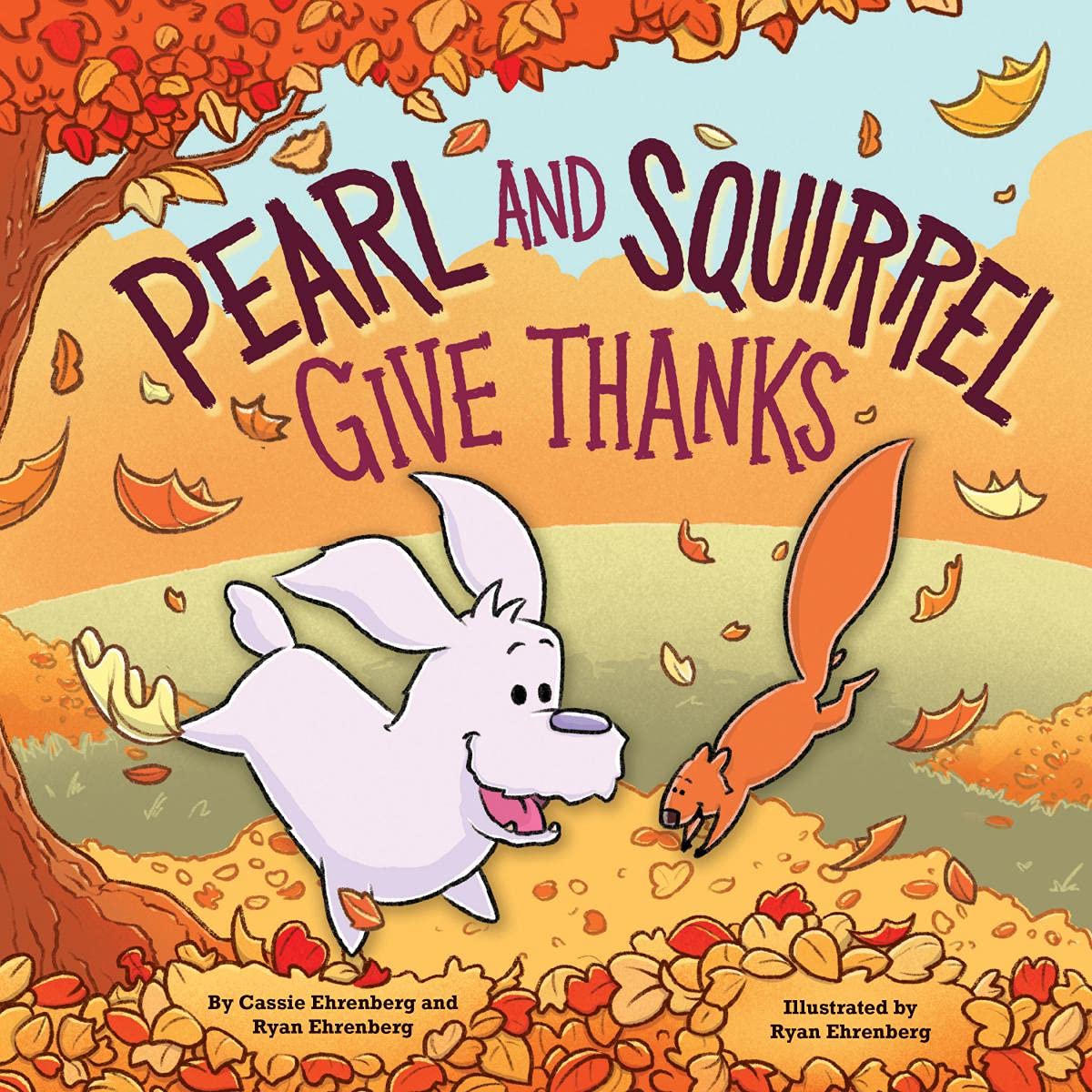
Peyton Picks the Perfect Pie: A Thanksgiving Celebration
Written by Jack Bishop, Illustrated by Michelle Mee Nutter
Peyton is particular – not picky. She likes and tries lots of new things, but she won’t eat foods that are sticky, lumpy, gooey, flaky, wiggly, or foods of certain colors. With Thanksgiving approaching, Peyton promises her dog Mila and her parents Penny and Peter that she’s going to try to eat pie this year for the first time. On Thanksgiving morning, Peyton helps Penny with preparing an apple pie, though she doesn’t care for the flaky crust it will have when it is baked. Uncles Sherwood and Mark then arrive with a lemon chess pie, and after, Maria Alvarez arrives with a ruffled milk pie made with phyllo pastry. One after the other, guests arrive with pies with all kinds of textures, colors, and consistencies. Dinner comes and goes, with the guests receiving a heartfelt toast from Penny and Peter, and then it’s pie time! Aunt Polly arrives with ice cream, which Peyton loves. What kind of pie does Peyton try? You have to read Peyton Picks the Perfect Pie: A Thanksgiving Celebration to find out.
Jack Bishop leads the creative teams at America’s Test Kitchen and has written many books, with this being his first children’s book. Michelle Mee Nutter is a Boston-based freelance illustrator and graphic designer, and the author of a debut graphic novel, Allergic.
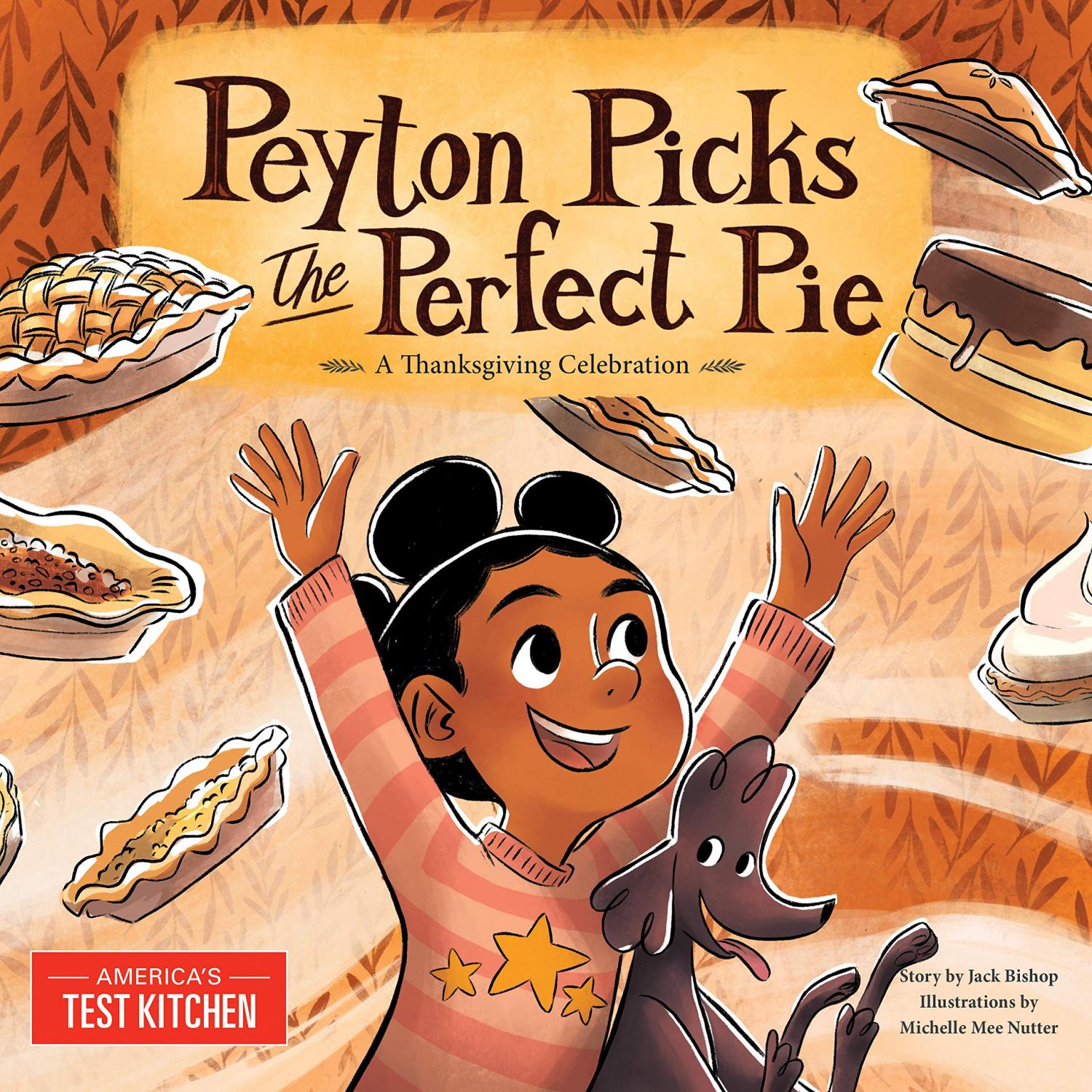
If Animals Gave Thanks
Written by Ann Whitford Paul, Illustrated by David Walker
How might animals sound and act when giving thanks like we do at this time of the year? In the growing autumn as temperatures fall, Rabbit, with his thick fur and hop will purr and rumble something like a cat does. Squirrel will flourish her tail over her head to protect it from whatever might be falling through the tree and squeak while Bear gratefully gathers clumps of late summer sweet clover and honey. And when the wild winds whoosh, Crow caw-caws and flies in loops for fun. Raccoon chir-chirrrs to her baby, while Turtle clicks his satisfaction with his hard shell that also serves as his home. The story ends with everyone enjoying each other’s company in the brisk weather and the bounty nature has provided them.
Young readers will love the soft, blurry quality and vivid acrylic colors of the illustrations of animals and nature, enjoy the rhyming verse, and learn some of the sounds animals really make. Anne Whitford Paul is a children’s author and poet, known for the If Animals series and most recently completed Who Loves Little Lemur and If Animals Tried To Be Kind. David Walker is the illustrator of many children’s picture books, including the Bears series by Shirley Parenteau, You Mean the World To Me by Bayne Gibby, and Before You Were Mine by Maribeth Boelts.

The World Needs More Purple People
Written by Kristen Bell and Benjamin Hart, Illustrated by Daniel Wiseman
Who could have known that people who become exceptionally great also become purple – not by literally painting themselves purple, of course, but by becoming purple imaginatively, on the inside! People can become purple by exercising their curiosity, feeling hearts, determination, and imaginations – while acknowledging and respecting other people’s differences as well. Firstly, people can ask great questions both big and profound and small and overlooked, about everything and about another. Secondly, people can remember to genuinely laugh a lot, together with other people. As a result, people can share and forget what causes them to differ and be angry with others. Next, people can use their voices to sing, speak up, help others find their voices, and listen to them. Or, people can work hard, alongside others, to get things done and help those who need help. And lastly, people can individually develop their real, total, unique selves.
Kirsten Bell is a well-known actress and singer who starred in the TV dramas Veronica Mars and is the voice of Anna in Disney’s Frozen movies. Benjamin Hart, a designer and creative director at the community-building agency Brains on Fire, with The World Needs More Purple People being his first children’s book. Daniel Wiseman is the illustrator of Don’t Hug Doug (He Doesn’t Like It), What About X? An Alphabet Adventure, and several books in the Baby Scientist series.

October
Though society has a come a long way in how it deals with individuals – including children – with disabilities, there is still a way to go. This month’s selection of books focuses on kids with disabilities, how much they have accomplished, and strategies for how to cope with individuals and situations that can make life even more challenging.
Greta Thunberg
Written by Maria Isabel Sánchez Vegara, Illustrated by Anke Weckmann
Greta Thunberg is the amazing climate change activist who became environmentally conscious at an early age. Her activism is due in part to her supportive parents, and to her extraordinary determination, commitment and willingness to put aside a conventional childhood.
From a young age, she was diagnosed with selective mutism and Asperger’s syndrome, conditions which have presented challenges in her life. Despite these challenges, she has focused on her activism, inspiring children to protest global warming through her school strike for climate. She also addressed the United Nations Climate Summit and the General Assembly in 2019.
German illustrator Anke Weckmann researched Greta thoroughly and incorporated many details into her drawings in this wonderful book. There is also a timeline of her life in the afterword, making this a great addition to the Little People, Big Dreams series. (Ages 7 – 10 years)
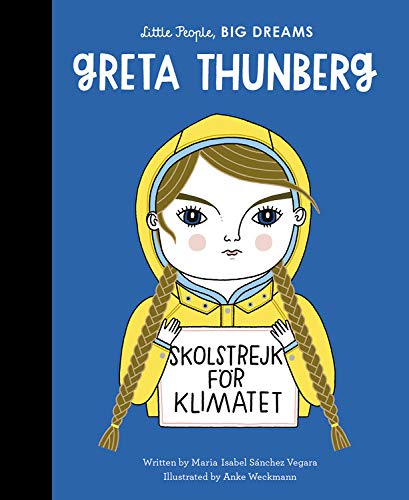
Don’t Hug Doug (He Doesn’t Like It)
Written by Carrie Finison, Illustrated by Daniel Wiseman
Doug likes you (the reader), harmonica bands and collections of rocks, socks and chalk. But ask him if he wants hello hugs, goodbye hugs, game-winning home run hugs and he’ll tell you they aren’t welcome, generally. An offer of a consoling hug when an ice cream cone is dropped, spurs a humorous response, “Still no, but [he’d] love another scoop!” Readers will learn Doug does like a special kind of hug – one from his mother at bedtime.
Readers will also learn that it’s essential to maintain respectful, physical boundaries with others we know, to ask if we can hug someone and also learn how else we can physically interact with those whose company we enjoy.
Carrie Finison is the author of Dozens of Doughnuts, and the soon-to-be published Hurry, Little Tortoise and Lulu and Zoey. Daniel Wiseman is the illustrator of many books for kids, including The World Needs More Purple People and the hilarious When Your Lion Needs a Bath. Readers will love Doug with his cowlick hair, big reading glasses, and his various hi-fives. (Ages 4 – 8 years)
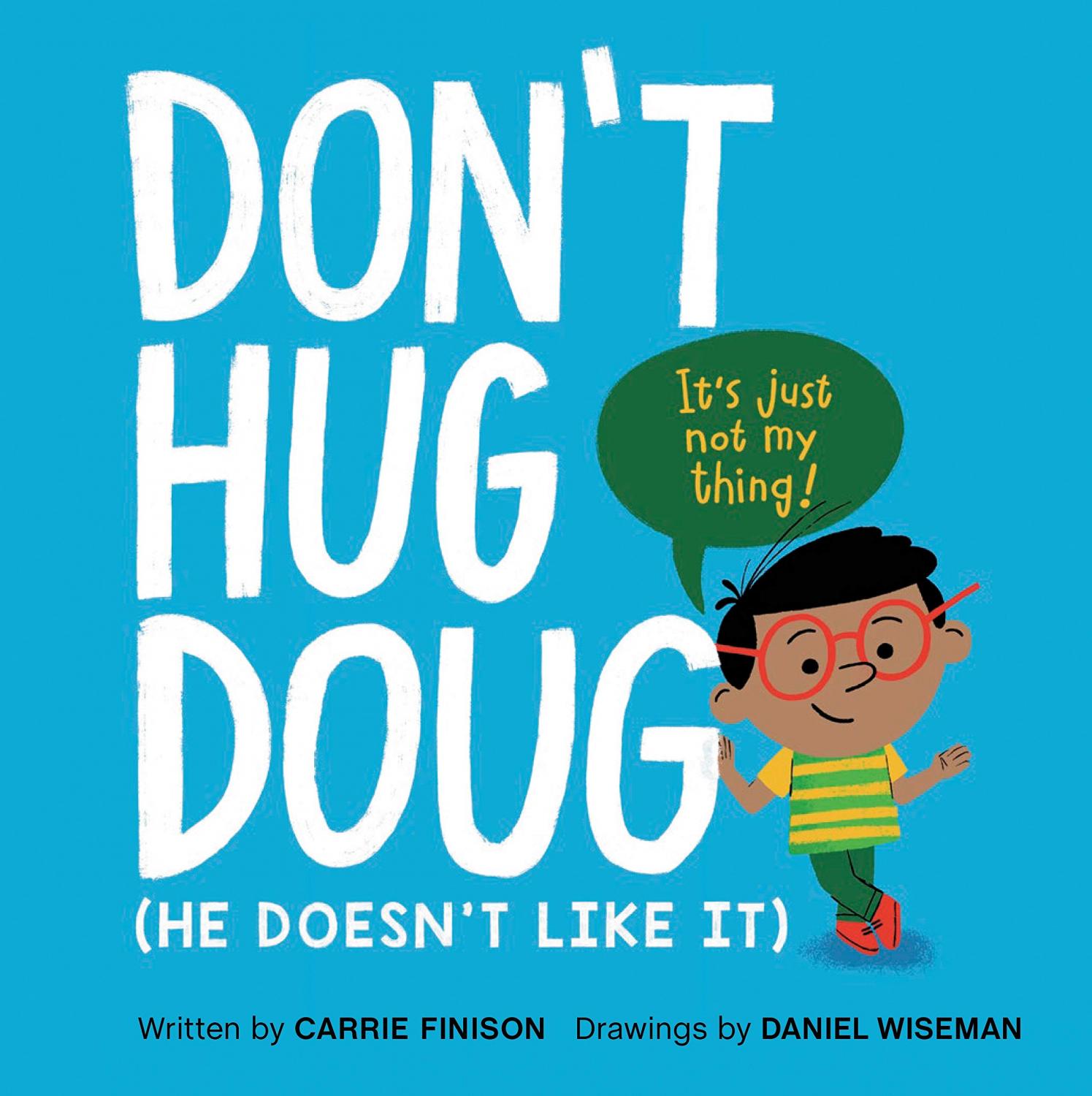
All the Way to the Top: How One Girl’s Fight for Americans with Disabilities Changed Everything
Written by Annette Bay Pimentel, Illustrated by Nabi H. Ali
Foreword by Jennifer Keelan-Chaffins
What was the Capitol Crawl, and how did it become a famous historical flashpoint? It was a literal climb up to the top of the steps of the U.S. Capitol in Washington, D.C., by eight-year-old Jennifer Keelan-Chaffins and other disabled activists of all ages and races. In 1990, The Crawl successfully drew attention to all of the physical barriers, separateness, hardships, and unfairness the disabled face in living simple, daily lives. Jennifer, who readers learn has had cerebral palsy from childhood, was not able to fully attend kindergarten like other children and even had to repeat it. Nonetheless, due to Jennifer and others, the Americans with Disabilities Act (ADA) became law. ADA laws have visibly (and invisibly) transformed the lives of generations of children and adults with disabilities in our country’s schools, public buildings, parking lots, sidewalks and public transportation.
Young readers will find a brief biography of Jennifer and a timeline of some of her personal achievements (as well as historical events), as well as a bibliography with more resources. All the Way to the Top was written by Annette Bay Pimentel, the author of the award-winning children’s books, Mountain Chef and Girl Running. California-based Nabi H. Ali has illustrated other children’s picture books recently, including Laxmi’s Mooch and The Fighting Infantryman. (Ages 7 – 10 years)
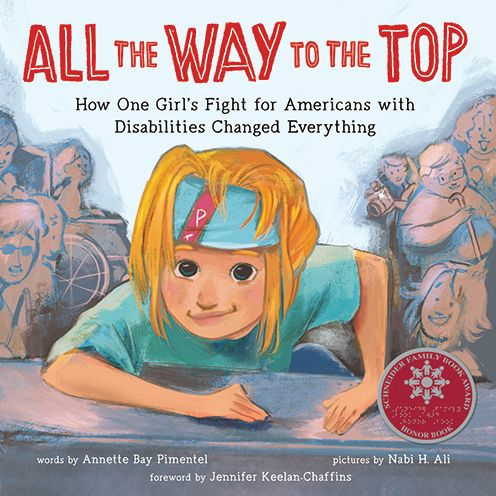
Okay Kevin: A Story to Help Children Discover How Everyone Learns Differently
Written by James Dillon, Illustrated by Kara McHale
Kevin is a shy, but active kid, lively at home and at the swimming pool. While at school, Kevin is a worried kid, feeling self-conscious and frustrated by how slowly he reads and learns stuff. Eventually he is assigned to work with Mrs. Martinez, the reading teacher, so he can catch up with his classmates. Kevin works hard to read better and learns a lot, but even further into grade school, he still thinks he’s not “okay.” That changes when Mrs. Martinez asks Kevin to help manage the new school store, where after training and practice, Kevin discovers a hidden talent for mental arithmetic, making change and delivering excellent customer service! His efforts eventually garner praise and recognition from everyone in the school including the principal!
James Dillon was a school educator and administrator for many years and is the author of several other books – No Place for Bullying: Leadership for Schools That Care for Every Student, Reframing Bullying Prevention to Build Stronger School Communities, and Marching with Dr. King. He also developed the Peaceful School Bus program. Kara McHale is the illustrator of several children’s books including The Sibling Survival Guide, Outsmarting Worry: An Older Kid's Guide to Managing Anxiety, and Billy Bramble and The Great Big Cook Off. There’s also a short, helpful guide for parents and educators on the challenges involved with learning strategies at the end of the book. (Ages 5 – 8 years).
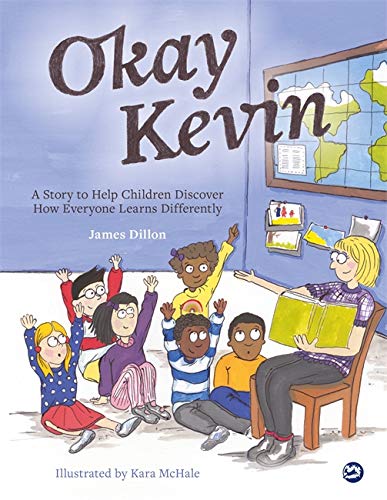
We're All Wonders
Written and Illustrated by R.J. Palacio
Auggie is a ten-year-old wonder kid. He doesn’t look like other kids (he has only one eye), yet he likes and does pretty much all of what they do. It doesn’t stop other kids from staring, pointing him out, or being mean to or laughing about him. It hurts the feelings of Auggie and his dog, Daisy. So, Auggie puts on his space helmet (so does Daisy) and they blast off on an imaginary voyage to Pluto, where they imagine lifeforms different from themselves. The voyage helps Auggie put his differences into perspective and to realize there are many, many people on Earth who also look different, like he does, and that there is room for everyone to be different. He also realizes he can accept himself for how he looks and realizes that others can change the way they see him and others who look different. Kindness, it turns out, is wondrous.
R.J. Palacio is the author of the bestselling author Wonder, Auggie & Me and 365 Days of Wonder. She’s a graphic designer and art director by training and background, with a long-standing love for the works of author-illustrators Antoine de Saint-Exupery, Maurice Sendak and the D’Aulaires. (Ages 4 – 8 years)
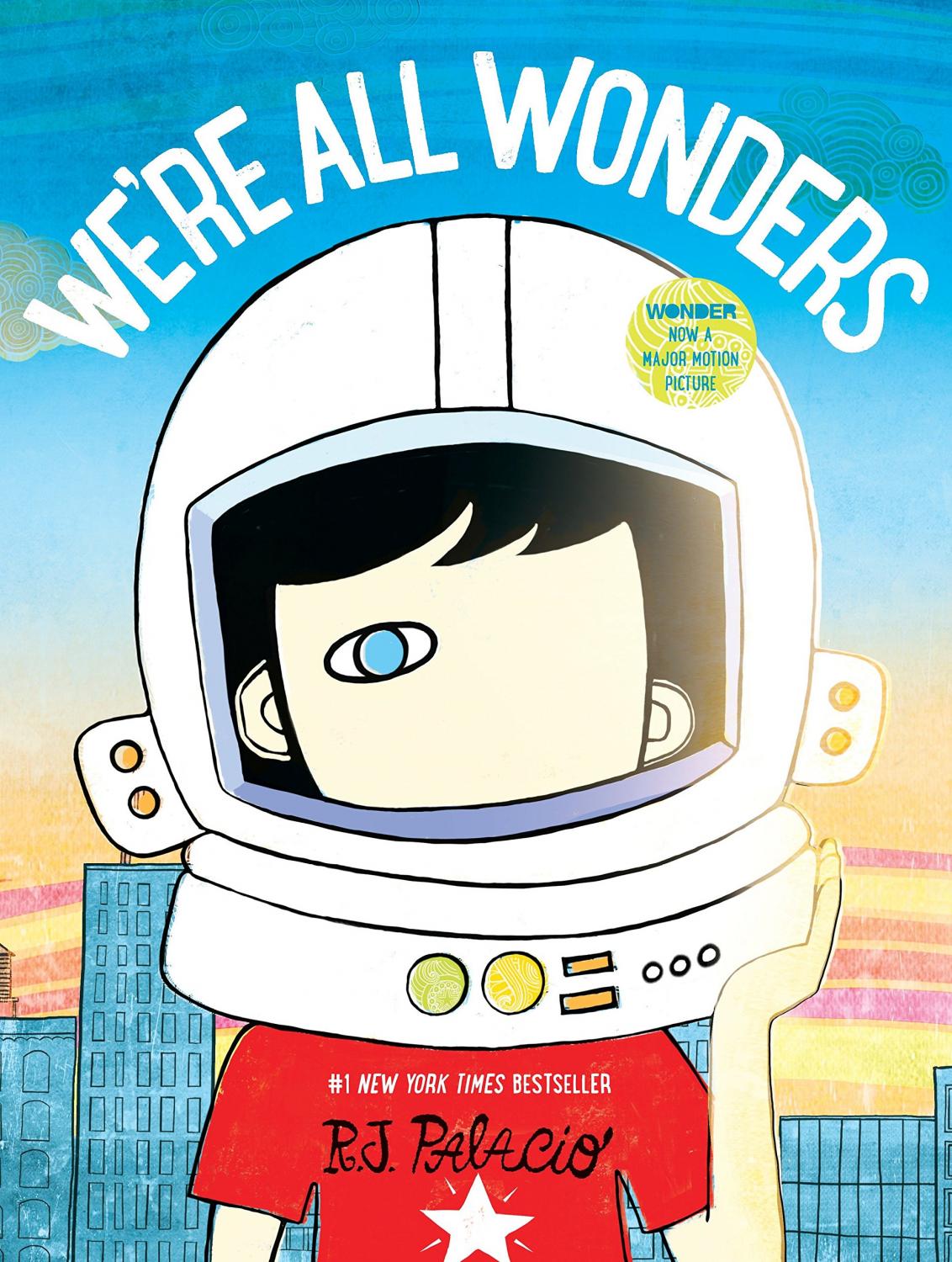
Across the Bay
Written and Illustrated by Carlos Aponte
The meaning of family expands beyond Carlito’s mother, grandmother and family cat, Coco, in this rich story about a boy’s journey to find his father. Carlito’s desire takes him to the capital city of San Juan, Puerto Rico, across the bay from his home. Costumed musicians, enchanting cats and more populate the scenes, with Carlito searching through city streets with a picture of his father in hand.
A fashion illustrator born in Puerto Rico, Carlos Aponte eventually came to live and work in New York. Aponte is the author and illustrator of another children’s book, A Season to Bee. (Ages 4—8 years)

¡Vamos! Let’s Go Eat
Written by Raúl the Third, Colors by Elaine Bay
Little Lobo and Bernabé receive an urgent, important message via Kooky Dooky that they need to deliver some food right away to el Toro and his friends at el Coliseo, the big sports arena. The food will feed the players in a big match at the stadium. When they arrive they see food trucks and long lines of people waiting to get into the arena.
Little Lobo finds el Toro and his hungry, outlandish friends and takes their food orders for jicama (a kind of potato), peinos picados (chopped cucumber), carnitas (pulled pork), burritos and tacos, kabobs, toras de milanesa (a fried, breaded pork sandwich), churros (fried sweet dough), and elotes (grilled corn on the cob).
This book, which has a food glossary at the end, will have young readers hungry for Mexican-American food! Little Lobo and his buddies and their busy world are illustrated in fun, colorful detail by Raúl the Third, an award-winning illustrator, author, and artist living in Boston. Also check out ¡Vamos! Let's Go to the Market. (Ages 4 – 10 years)
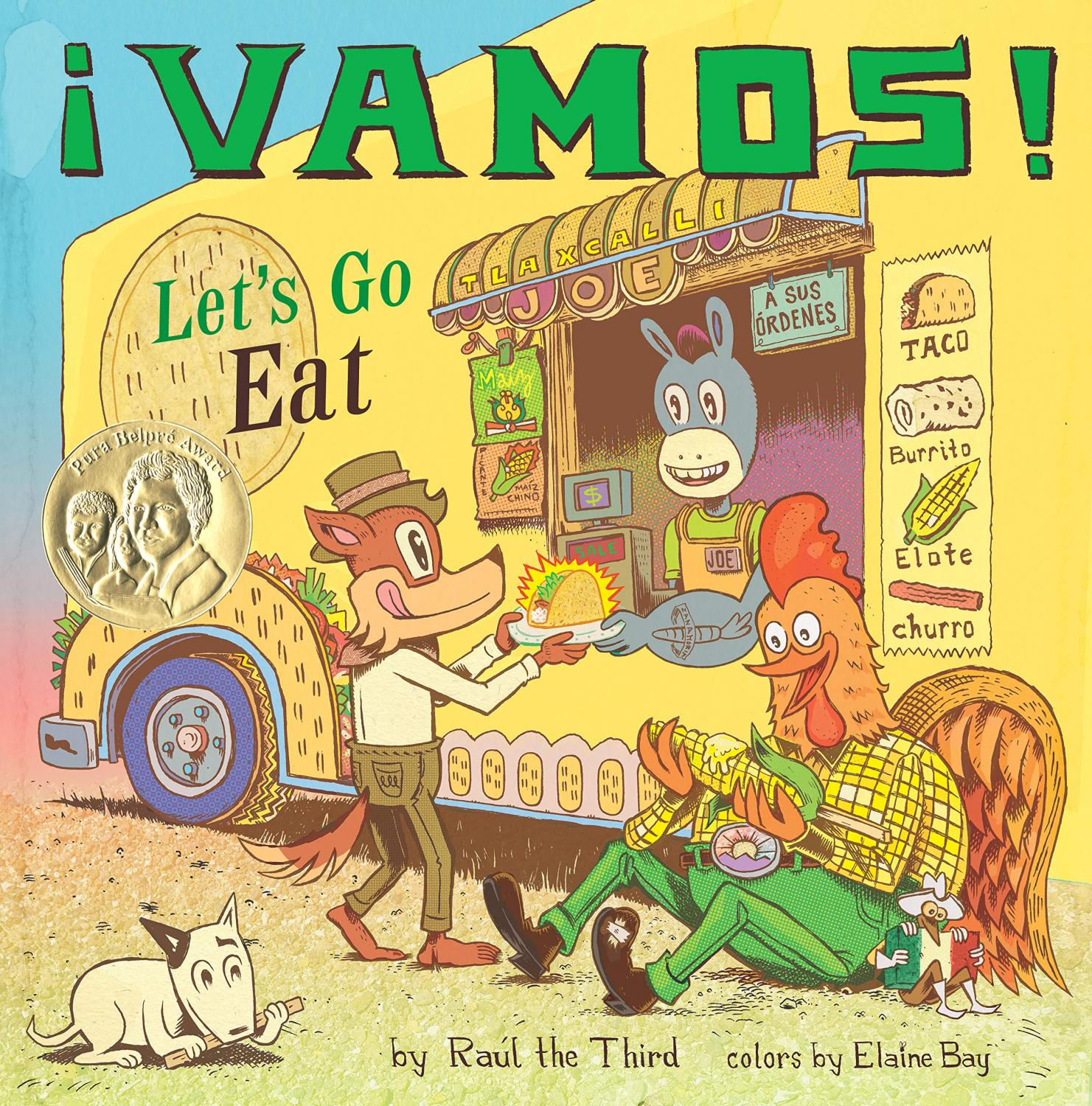
A Girl Named Rosita: The Story of Rita Moreno: Actor, Singer, Dancer, Trailblazer!
Written by Anika Aldamuy Denise, Illustrated by Leo Espinosa
World renowned actress, singer and dancer Rosita Dolores Alverio was born in Humacao, Puerto Rico. As a child, she moved with her family to New York City. It took Rosita a while to situate herself in a strange place with a cold climate, a new school, and the need to learn English. She also discovers her love to move and dance, enrolling in dance classes with Paco Cansino, the uncle and teacher of the famous Hollywood movie star and dancer Rita Hayworth. Flash-forward several years, and Rosita would record for radio and start to perform onstage for U.S. service members. She also adopted her new stepfather’s last name, Moreno, and she was signed shortly after to MGM movie studios and adopted the name “Rita.” While her first Hollywood parts were stereotypical, Rita eventually landed the breakout role as Anita in West Side Story, and she went on to win the first Oscar award for Latinas, as well as all Puerto Ricans. Bravo, Rita!
Anika Aldamuy Denise is the award-winning author of Planting Stories: The Life of Librarian and Storyteller Pura Belpré, The Love Letter, Starring Carmen!, and Monster Trucks! Award-winning illustrator and designer Leo Espinosa’s depictions of Rita and her world are gorgeous and enchanting. This book is also available in Spanish. (Ages 5 – 9 years)
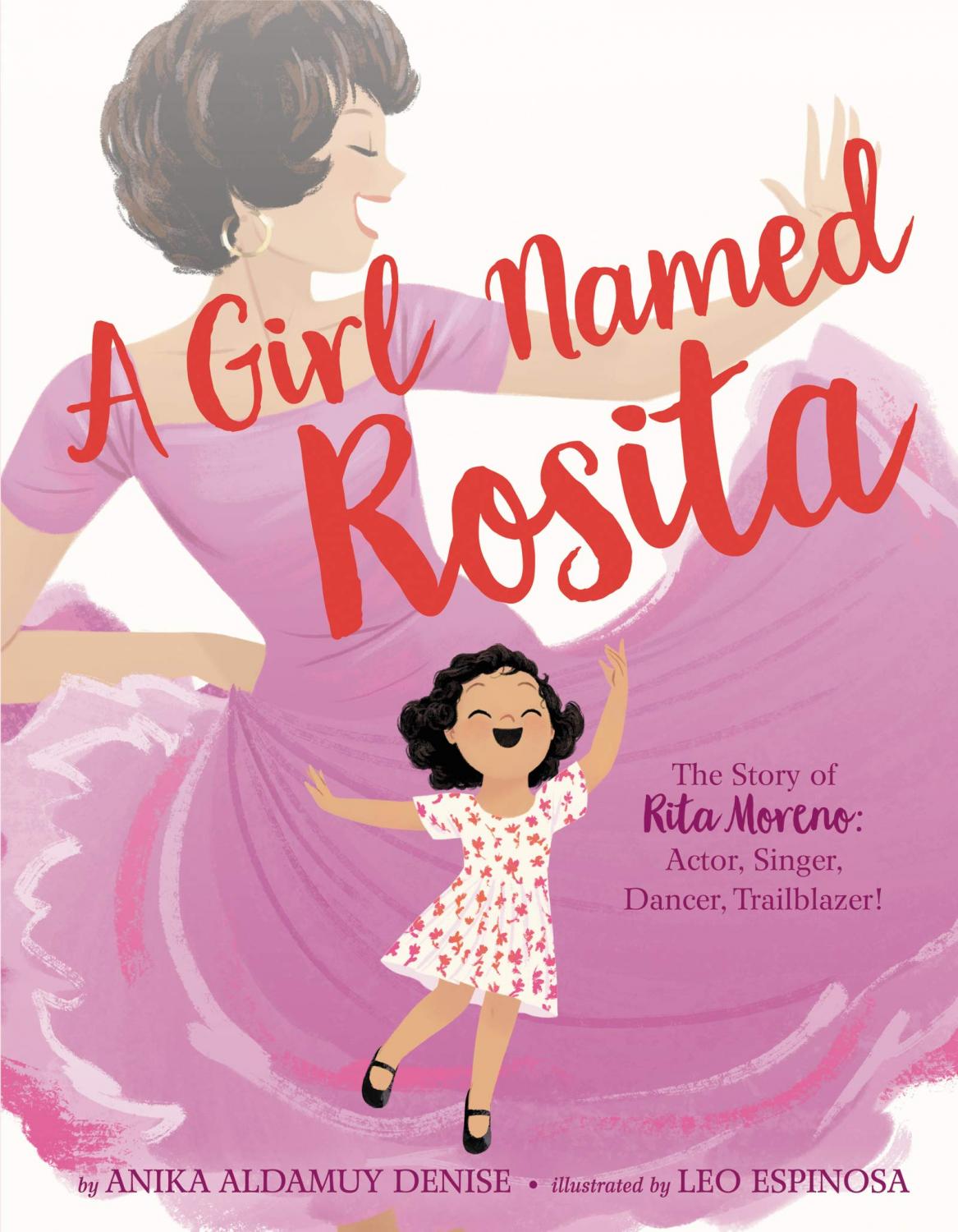
Sharuko: El Arqueólogo Peruano/Peruvian Archaeologist Julio C. Tello
Written by Monica Brown, Illustrated by Elisa Chavarri
Spanish translation by Adriana Domínguez
If we know more about the ancient ruins and indigenous cultures of Peru, it is probably in part because of Julio C. Tello, Peru’s founding archeologist and historian. Julio Tello and his family were indigenous Peruvians, speaking Quechua – the language of the Incas and many Native people still living in Peru. From a young age, Julio and his brothers, proud of and keenly interested in their heritage, explored caves and burial grounds in the foothills of the Pariacaca mountain range in Peru (part of the Andes); Julio earned the name Sharuko, meaning “brave” in Quechuan, as a result. The brothers discovered human skulls that their father sent to Lima to be scientifically studied. As an adult, Sharuko entered the National University of San Marcos to study medicine. Remembering the human skulls he and his brothers had found years earlier, Sharuko decided to use his medical skills and knowledge to study the mummies and skulls of ancient indigenous Peruvians. Later, Sharuko would discover the now-famous archaeological ruins of Chavín de Huántar, along with extraordinary ancient textiles and mummies and the famous Tello Obelisk. He proved that Peru’s ancient civilizations originated there.
A daughter of a Peruvian immigrant to the U.S., Monica Brown grew up between the two countries. She has authored numerous children’s biographies of Tito Puente, Frida Kahlo, Gabriel Garcia Marquez, Pablo Neruda, Celia Cruz, and Pélé, as well as the popular Lola Levine, Sarai, and Marisol McDonald books. Peruvian immigrant Elisa Chavarri is the illustrator of Rainbow Weaver/Tejecora del arcoíris, about a young Mayan heroine. (Ages 6 – 10 years)
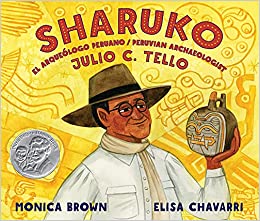
August
Back to school is always a big deal. Like last year, kids and parents are dealing with a lot of difficult questions as the start of the fall 2021 school year approaches. Whether going into kindergarten, middle school or high school, nerves and anxiety are common. This month’s selection of books will help our children see that there are a lot of supportive and helpful people to help them.
A Thousand White Butterflies
Written by Jessica Betancourt-Perez and Karen Lynn Williams, Illustrated by Gina Maldonado
Isabella is a little Colombian girl new to the cold, gray winters in the United States. She misses her Papa and friends back home, where it’s friendly, warm, lush, and green. But Mama is quick to assure Isabella she’ll make new friends at her new school. When the start of school comes, there are mounds of snow and snow flurries outside, resembling a thousand white butterflies, and school gets cancelled! Gazing out the window with disappointment, Isabella spots another little girl outside, slipping on the sidewalk and falling into the snow! She goes outside and meets Kate, who shows her how to play in the snow. At the day’s end, all is well, and Isabella has a new friend and new love of snow!
Co-writer Jessica Betancourt-Perez is a school psychologist who immigrated to the US from Colombia as a teen and is now a school psychologist. Co-writer Karen Lynn Williams is the grandchild of immigrants, and Jessica’s story resonated with her, resulting in this wonderful picture book. Illustrator Gina Maldonado, originally from Columbia, studied architecture and interior design. Readers will enjoy the cheerful illustrations of Isabella, her family, and the white world outside her window, as well as the unexpectedly delightful details inside Isabella’s home. (Ages 4 - 8 years)
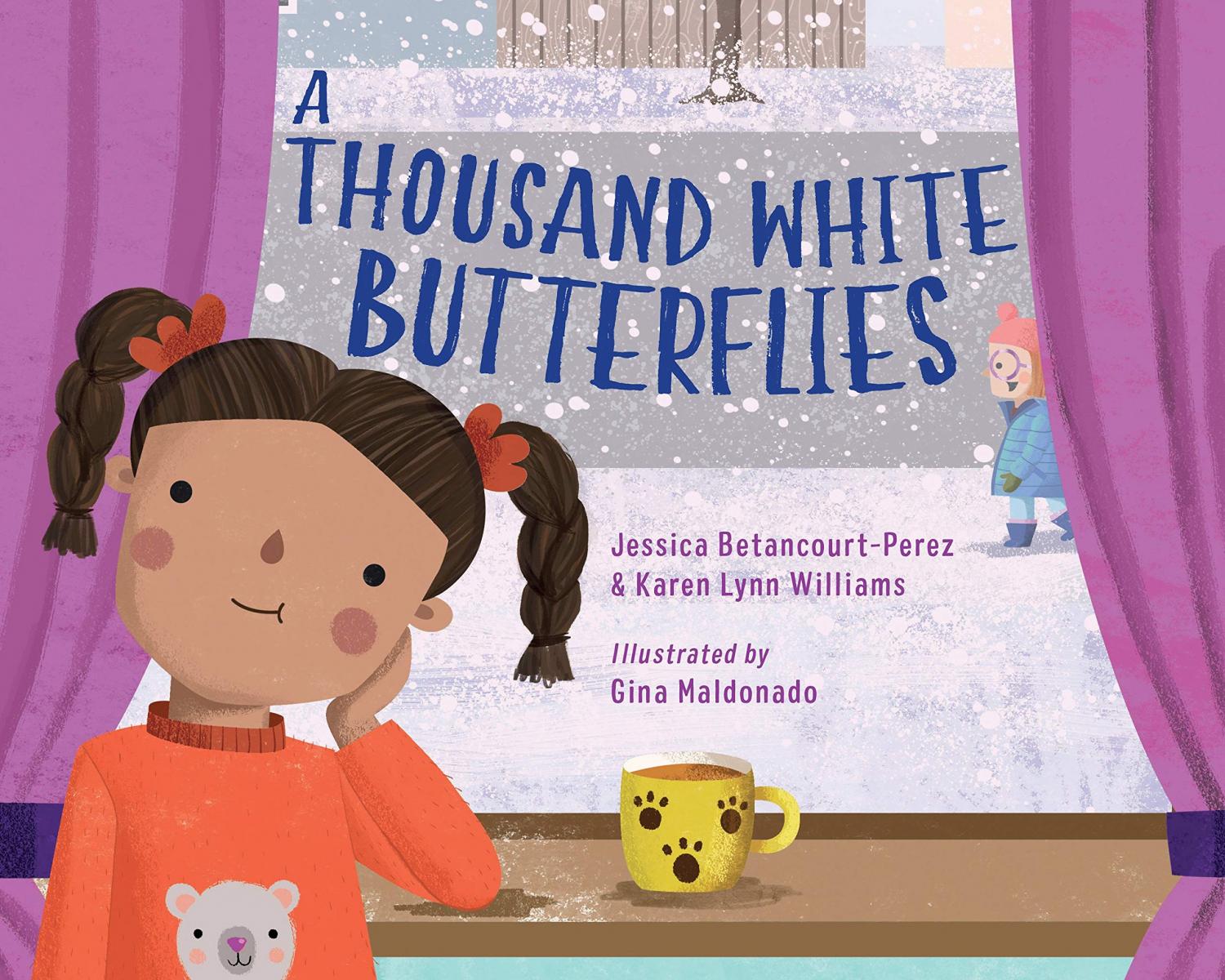
Superhero vs. School
Written and Illustrated by Ethan Long
Who will win – Scotty the caped, crusading kid hero, who in his dreams races toward distress and hurls himself into action? Or, the other Scotty, the ordinary kid overpowered by the long dreaded first day of school, his greatest foe? Young readers will be thoroughly immersed in Scotty’s battle with the school, a battle where he is being swept up along with countless children into a building transformed into a venomous villain that taunts him: “You’re a fool to duel with school!” How will Scotty fend off his teacher, as well as the accoutrements of schooling – pencils, books, paper, erasers, which appear to be quite malevolent and ready to attack upon entry? Read this delightful, hilarious story and find out!
Ethan Long is the author and illustrator of Fangsgiving, Valensteins, Fright Club, Me and My Big Mouse, Chamelia and the New Kid in Class, as well as the award-winning Up, Tall, and High! (Ages 4 - 8 years)
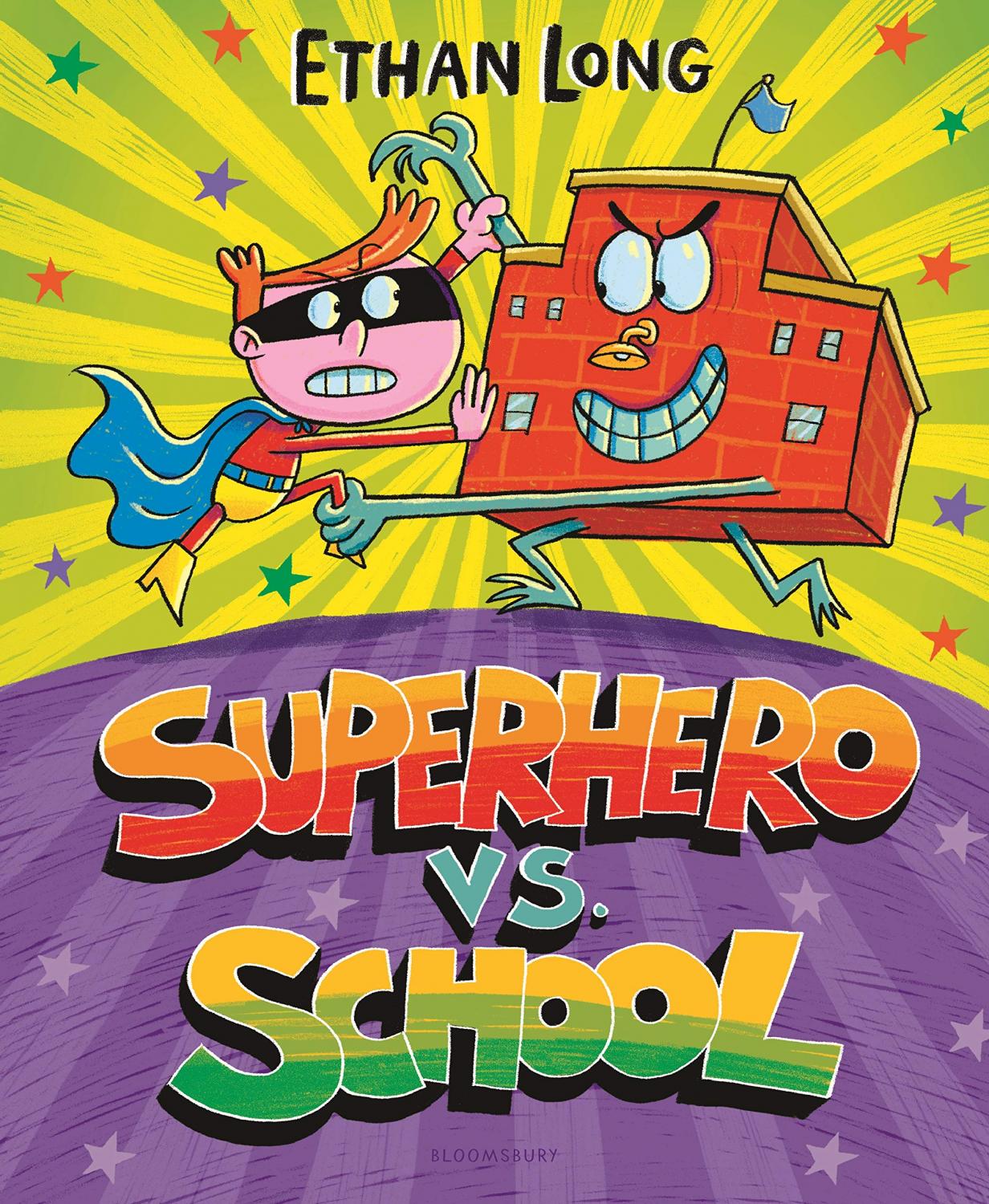
Lena’s Shoes are Nervous: A First-Day-of-School Dilemma
Written by Keith Calabrese, Illustrated by Juana Medina
Lena’s first day of kindergarten has arrived, and her blue dress, pink-stripped socks, and headband with the bright green flower are at the ready! But Lena’s favorite shoes are n-e-r-v-o-u-s and Lena can’t go without them on. Dad suggests they talk encouragingly to her shoes, but of course, we cannot talk to shoes, as Lena points out. However, Lena’s colorful headband is liked by all of her clothes and the headband can talk to everybody, it turns out. So, Lena gets her shoes and headband close together to talk and convince the shoes to be brave. Will Lena’s shoes make her and Dad proud and allow themselves to be worn on this momentous day? Read the story to find out!
Keith Calabrese is based in Los Angeles, California, with his family, and is the author of middle school-focused works of fiction, A Drop of Hope and Connect the Dots. A graduate of the Rhode Island School of Design, Juana Medina has illustrated several children’s books, and enjoys drawing to feel a little less nervous. (Ages 3-7 years)
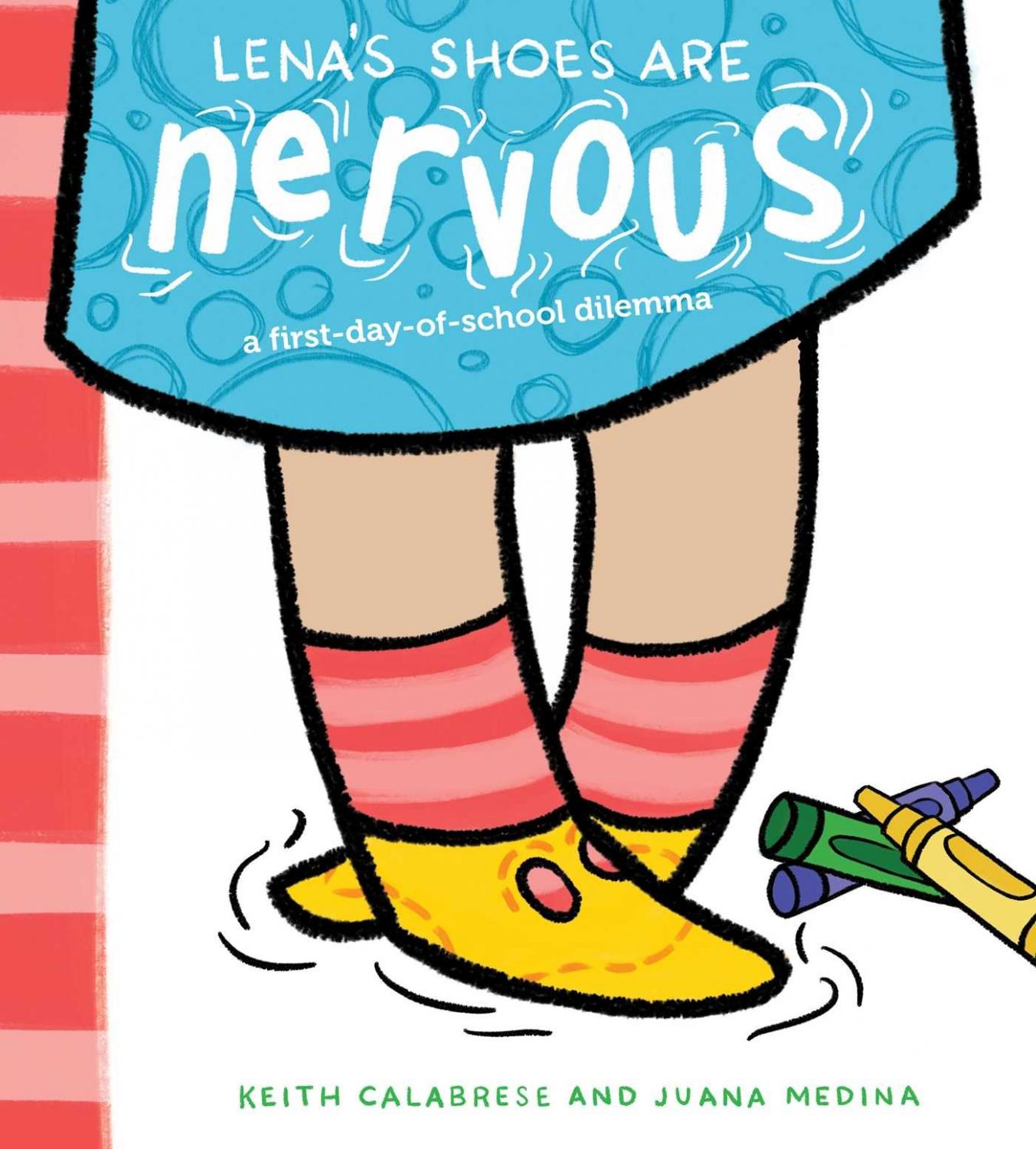
Heroes Wear Masks: Elmo’s Super Adventure
Written by Lillian Jane, Illustrated by Ernie Kwiat
How will some kids be facing the new school year even during the pandemic? Are you nervous? Not Elmo, who goes through steps to make the experience easier. With hands on his tummy, he takes slow, deep breaths and releases them slowly. Is hygiene a question? Elmo knows to wash, scrub, and dry one’s hands routine, sung to the twenty-second version of I know my ABCs. Is there need for energy? Elmo brims with it after eating a full, healthy breakfast. What about germs? Elmo knows the drill: he may have to have his temperature taken, needs to keep a safe distance from his friends, give them big waves without hugs, and wear his mask at school, in the playground, and whenever he leaves home, to protect himself and others. But Elmo knows also that most important of all, he’ll still be able to have a full, busy, and fun day.
Parents and kids will enjoy this helpful adventure story, complete with tips, concepts, and steps to stay healthy, connected, and happy this year. Art director and graphic artist Ernie Kwiat’s delightful illustrations also help bring Elmo, his mother, and his world to life. (Ages 4 - 8 years)
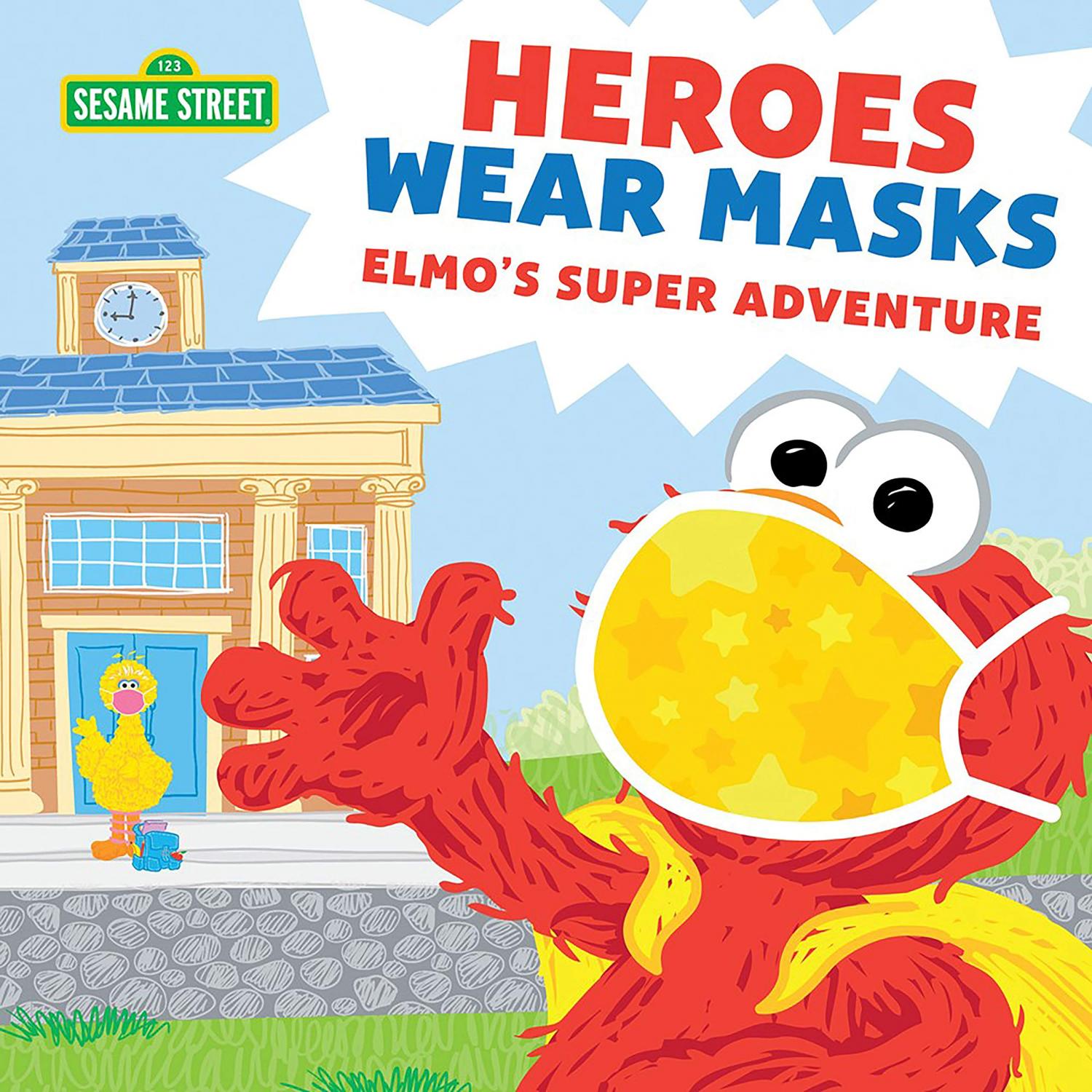
The Secret Life of Squirrels: Back to School
Written and Photographed by Nancy Rose
They’re baaccck. Who, readers ask? The Squirrels, of course. Join Mr. Peanuts and Rosie in the last days of summer as they get their special squirrel school (a.k.a. the Sunnywood Education Center) ready for their students. Rosie, as a squirrel-teacher, has lots of school supplies to buy for the students, and Mr. Peanuts helps her unpack all the books she’ll need in her classroom library. Up on the wall goes a “welcome” banner, along with class rules on the bulletin board to help the little squirrel-students start the year off right. There’s gym and music equipment, the community garden, as well as first aid supplies, to get ready. There’s barely time to squeeze in lunch out in the playground or start a conversation with Ms. Chattery, another teacher. Mr. Peanuts also dedicates time to practice driving the school bus route. Will everything be ready for the big day?
Canadian photographer Nancy Rose’s popular photos of wild squirrels in handcrafted settings, taken in her backyard, have proven quite popular in a series of other books, including The Secret Life of Squirrels, Merry Christmas, Squirrels! and The Secret Life of Squirrels: A Love Story. Readers will thoroughly enjoy this real photo story of the squirrels busy in action and the tiny school world around them.
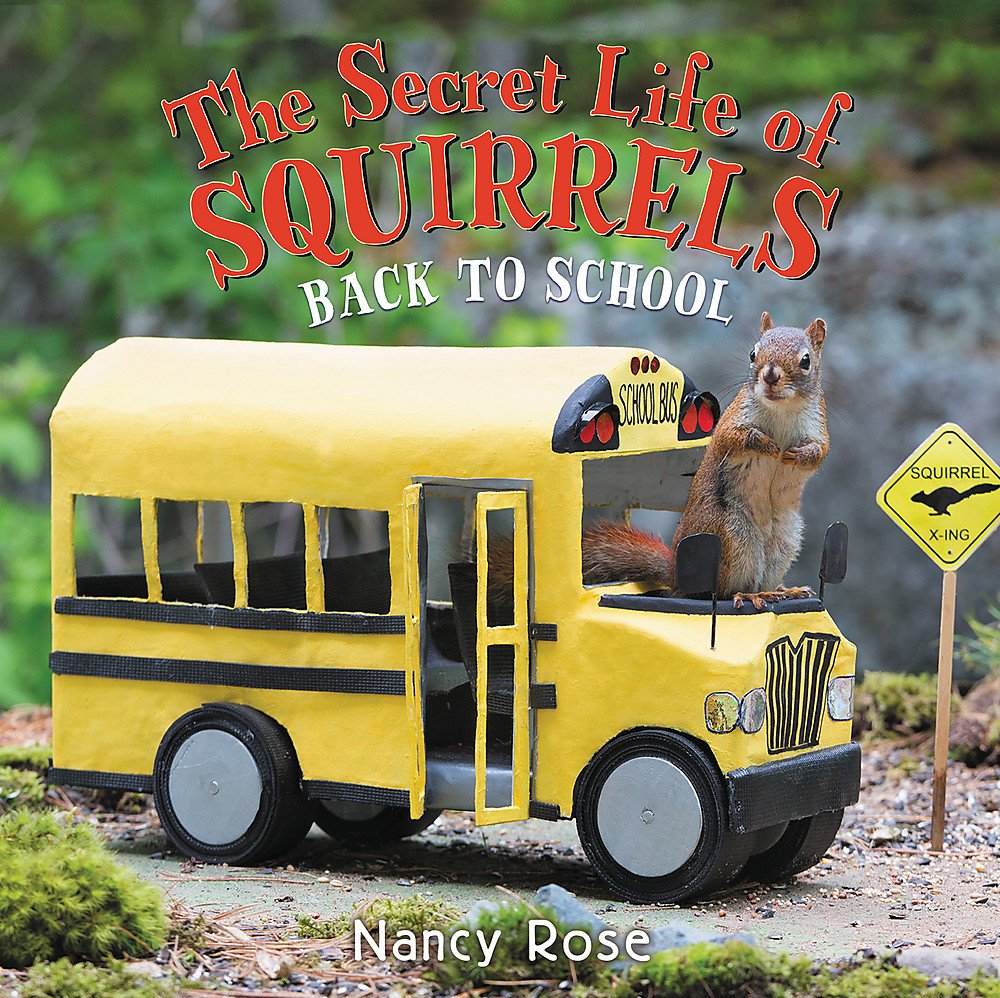
The Name Jar
Written and Illustrated by Yangsook Choi
Unhei (pronounced Yoon-hye) is a young Korean girl starting her first day of school in the U.S., but none of the American kids can pronounce her name. In class she’s introduced by the teacher, Mr. Cocotos, to everyone. When asked her name, though, Unhei tells them she hasn’t picked one yet. At home, she shares with her mother that she wants an American name instead of her own, even though her mother and grandmother sought the help of a name specialist to find Unhei’s name, which means grace.
While a glass jar of name suggestions starts in class, a classmate learns her true Korean name. Unhei shares with him a little block stamp with her name, written in Korean characters, made from wood that her grandmother in Korea gave her. Unhei soon discovers it’s the name she wants to be called, after all.
Yang-sook Choi came to New York from Korea to study art. She’s the author and illustrator of lots of award-winning children’s books, including the newly re-released New Cat. The Name Jar is available as an e-book in OverDrive. (Ages 4 - 8 years)
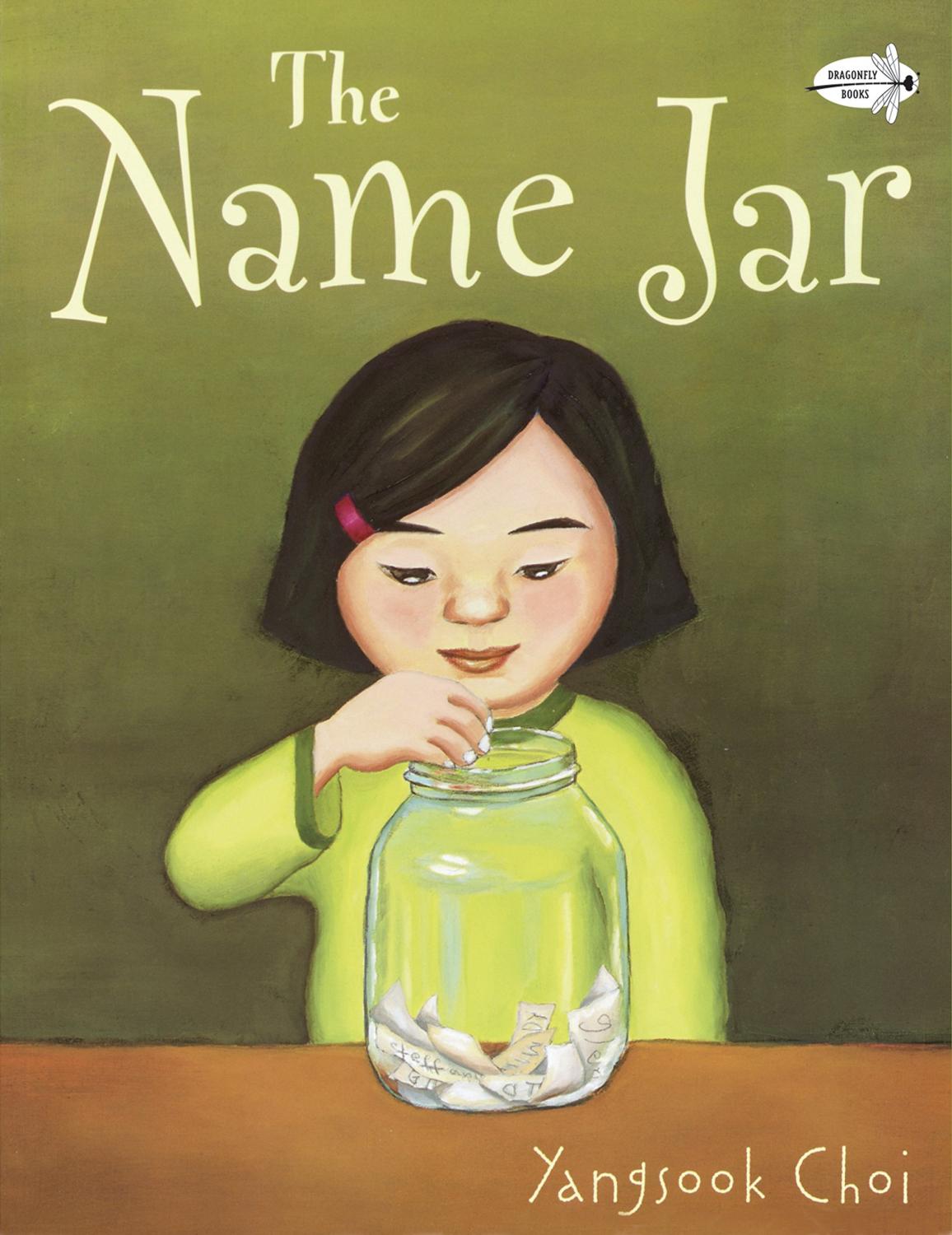
July
We share this world with furry, scaley and feathery friends of the animal kingdom. This month’s selection of books tells their stories with humor, imagination, mystery and more and reminds us that we share this planet with wonderful creatures
We feature gorgeous art about the Fussy Flamingo, which learns that food colors her feathers. In Anonymouse, the animals are inspired through art to achieve a better quality of life. I Am Not A Penguin: A Pangolin’s Lament, is about identity and how to take pride in the things that make you unique. In The Bear and the Fern, two unlikely friends learn that responding to each other’s needs is the key to a relationship that endures. The Elephant Keeper: Caring for Orphaned Elephants in Zambia tells the story of an elephant nursery that helps the animals return to the wild.
Fussy Flamingo
Written by Shelly Vaughan James, Illustrated by Matthew Rivera
Lola is an adorable baby flamingo swathed with soft, dull down feathers. Mami and Papi Flamingo trawl the waters, their curvy necks and beaks gracefully dipping down into the water, scooping up their fill of shrimp. When they briefly turn their backs, Lola dillies and dallies and slips away to forage on her own. She comes across a creamy avocado on the ground and eats it. “¡Ay de mi!,” cries Mami Flamingo at the sight of Lola, who has turned avocado green. They plead with Lola to eat shrimp to give her feathers a healthy blush, but Lola is not about to eat shrimp, not when there are pepino melons or dragon fruit nearby. Will she ever learn to eat shrimp like other flamingos?
Readers will enjoy the quirky Lola and her finicky food choices. There are also some flamingo facts at the end of the story – including the interesting fact that some favorite flamingo foods colored red-orange – like shrimp, algae, mollusks, small fish and insects – actually stain flamingo feathers pink! There are also resources listed about these beautiful birds. (Ages 4—8 years)
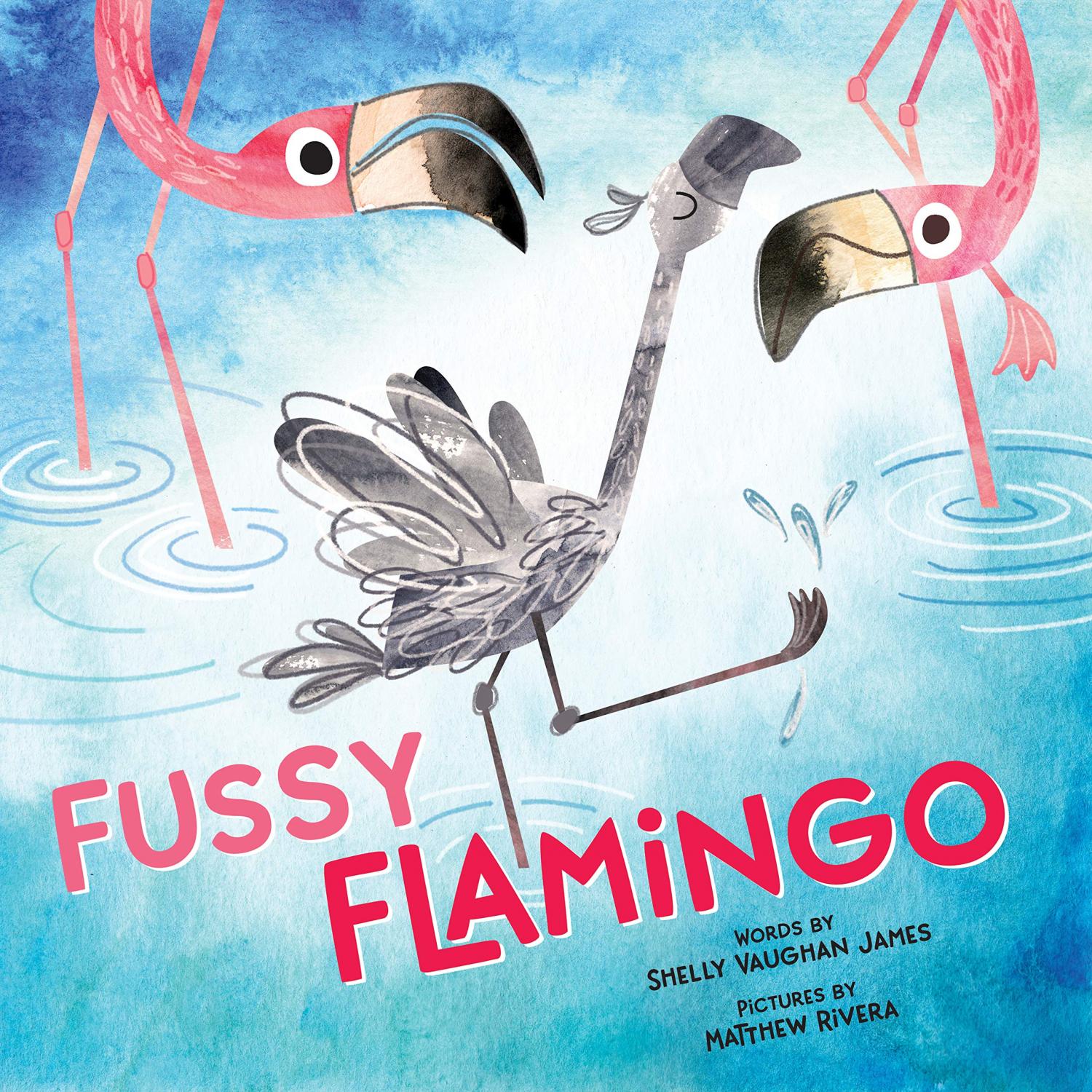
Anonymouse
Written by Vikki VanSickle, Illustrated by Anna Pirolli
Art can uplift any creature’s spirits, as this delightful tale shows. A tired city rat makes her way home to find it transformed with beautiful draperies and an awning painted in brilliant neon pink. Across the city, the bat colony settles in for a good day’s sleep, but not before noticing a neon pink bat insignia painted on the window. There is no explanation but only a signature below the insignia – “Anonymouse.” After that, Anonymouse’s brilliant neon pink art begins to appear everywhere to the animals of the city, to their amazement and enjoyment. As time passes, the art fades, becomes obscured or disappears completely. The city animals miss Anonymouse’s art and worry he has gone, as the city is again dangerous for animals. However, inspired by his work, the animals eventually begin art projects of their own in the city. And Anonymouse’s mysterious identity and legend continue to grow. Where his street art will appear next remains a mystery!
Fans of Banksy’s street art will love this book. Italian-born illustrator Anna Pirolli draws the city landscapes with a dreaminess and bold splashes of color, which will delight readers. (Ages 4—8 years)

I Am Not A Penguin: A Pangolin’s Lament
Written and Illustrated by Liz Wong
Hey world – pangolins want you to know about them! An earnest pangolin wants his/her fellow animals to know that pangolins are scaly mammals, not to be confused with penguins. Pangolins have long, sticky tongues (longer than their bodies) to eat ants and termites, not to be confused with frogs or anteaters. They are covered in scales, not to be confused with snakes. And when they are threatened, they spray a stinky liquid from underneath their tails, not to be confused with skunks! Fascinating information, right? But when a surfing penguin shows up, the animals desert the pangolin, leaving him/her with one remaining and intrigued human fan... a kid! And so, a new friendship begins.
Hawaiian-born Liz Wong holds dual degrees in anthropology and fine art, and lives in Washington state with her family. Readers will enjoy learning more about these enigmatic, gentle creatures whose existence and world are under threat from people, poaching and sprawl. This story is told in a humorous way and with a neat glossary at the end. (Ages 5—9 years)

The Bear and the Fern
Written by Mr. Jay, Illustrated by Mary Manning
Friendship stands the test of time in this endearing and heartwarming story. A young husband and wife move into a house to begin their new life. Joining them are a smallish green fern in a reddish clay pot (Fern) and a brand-new stuffed bear toy with brilliant white fur and a wide happy grin (Bear). The Fern and the Bear are placed together in the newborn baby’s room near a window, and so begins an unlikely relationship. Bear asks Fern to join him on evening explorations, but she, rooted to her pot, seemingly cannot or will not move. Bear proves to be a free spirit while Fern is a stickler. Years and seasons go by, and Bear and Fern grow old, but their friendship endures, and they support and encourage one another long after their human owners have abandoned them.
Readers familiar with Hans Christian Anderson’s The Steadfast Tin Soldier, or even the film and TV sitcom, The Odd Couple, will find enjoyable parallels in this story. Mr. Jay (Jay Miletsky) is the author of Ricky, the Rock that Couldn’t Roll and Beware of the Nose-Biting Monster. Mary Manning is an illustrator of several children’s books, including When… and Us. She specializes in character concept and design, and Bear and Fern are glowing, memorable creations in themselves. (Ages 4—8 years)

The Elephant Keeper: Caring for Orphaned Elephants in Zambia
Written by Margriet Ruurs, Illustrated by Pedro Covo
If elephants never forget, as the saying goes, then a young orphaned African elephant, Bezi, will probably remember Aaron forever! Once upon a time, Bezi, a wild baby elephant, who is dehydrated, starving and lost, accidentally falls into a vacation lodge swimming pool and nearly drowns. Fortunately, a young Aaron, arriving for work that day, discovered the poor, exhausted baby elephant in the pool, and with the help of other lodge staff managed to rescue him. Upon learning the mother elephant was likely killed by poachers, the rescued baby elephant, newly named Zambezi (Bezi), was placed at a local orphanage nearby just for elephants. Later, back home in his village, Aaron encountered somewhat mixed and complex reactions from his neighbors on his rescue of the baby elephant. But with encouragement from his mother and praise and recognition from his manager for his brave efforts, Aaron decides to check on Bezi at the nearby elephant orphanage the next day. The two of them successfully bond, as Aaron turns out to be a natural caregiver. The orphanage offers to train and pay Aaron to become a keeper, and so he stays on, becoming a keeper and caregiver to Bezi and other orphaned baby elephants from all over the country.
The book is inspired by the real-life story of Keeper Aaron at the Lilayi Elephant Nursery, outside Lusaka, Zambia, and Zambezi, the elephant Aaron has helped to raise and who has now been moved to the Kafue Release Facility, where he can gradually learn to live in the wild again. The book is filled with interesting facts and photos about rearing orphaned elephants and their care, and even has a glossary of words, some of them in Gobi (one of the Zambia’s local native languages). Margaret Ruurs is an avid traveler and author of several children’s books, including My Librarian Is a Camel and School Days Around the World. This is Columbian illustrator Pedro Covo’s first children’s book, and his artwork brings Bezi, Aaron and the world of Southern Africa beautifully to life for young readers. (Ages 5 – 9 years)
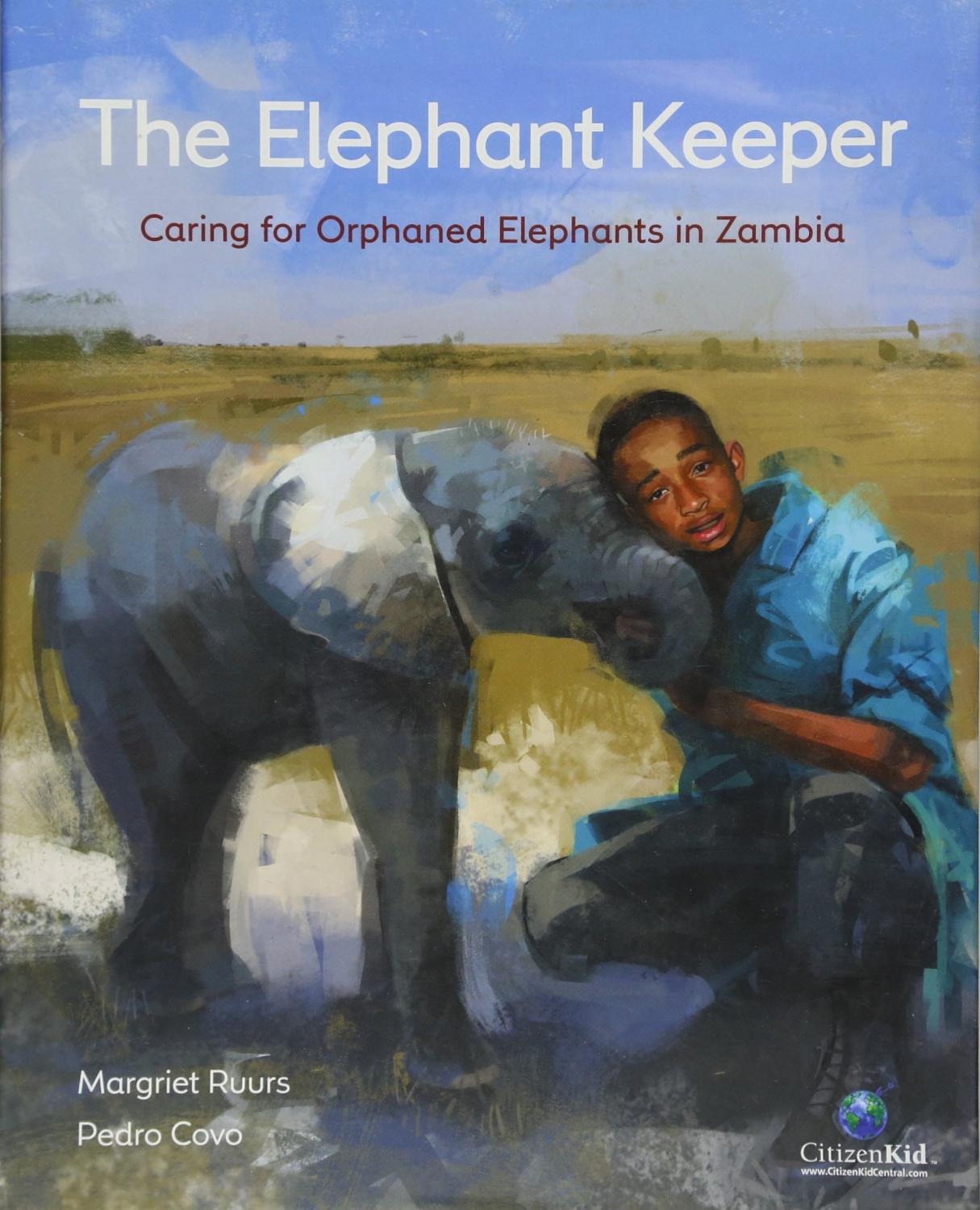
Eyes that Kiss in the Corners
Written by Joanna Ho, Illustrated by Dung Ho
The eyes hold the special bond and love that a mother and daughter share. In Eyes that Kiss in the Corners, a young daughter shares with readers that her eyes are unique and unlike those of her classmates, for hers “kiss in the corners and glow like warm tea.” Even more important is that all the women in her family share these wondrous eyes – her mother (Mama), grandmother (Amah), and younger sister Mei-Mei. Discover how all these female members of a family connect to one another from the daughter’s point of view, and the incredible future revealed in this young girl’s eyes.
An educator in the San Francisco Bay area, Joanna Ho is a first-time author. Dung Ho, the Vietnamese illustrator of the Mindy Kim series, brings an extraordinary talent to her portrayals of the young girl and the women of the family. The young girl’s eyes, her family, and the world she views them through, are exquisitely and lovingly depicted, in dazzling colors and sweeping lines. (Ages 4 – 8 years)
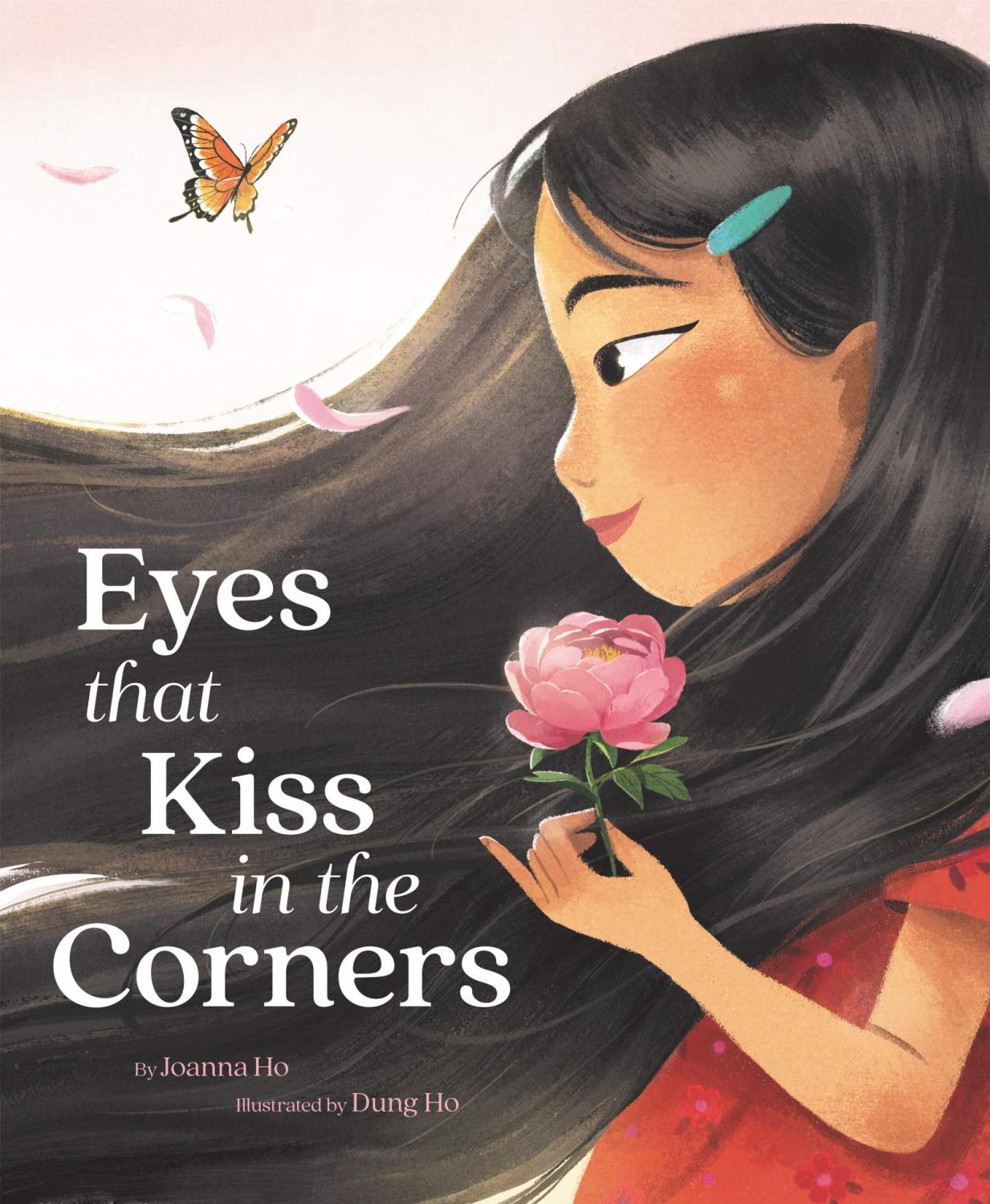
My Day with the Panye
Written by Tami Charles, Illustrated by Sara Palacios
In My Day with the Panye, Fallon’s dream is to carry a panye (big basket) on her head to the market in Port-au-Prince like her mother (Manman). On the big day, Manman and Fallon put on mouchwas (head scarves) and try to balance the basket on Fallon’s head – but boom – it quickly tips over and falls onto the floor. Then Manman sets the basket onto her own head and off they go to the market, passing tap-tap buses, hearing komba music echoing in the wind, and seeing walls displaying all kinds of colors. The panye lesson continues, with Manman encouraging Fallon to be as patient as a bird must be when building its nest (zwazo fe nich li) and for Fallon to be strong and caring. After an exciting day, they start home. But when will Fallon finally be able to carry the panye? Read this wonderful mother-daughter can-do story and find out!
Tami Charles is the author of Freedom Soup and All Because of You, as well as other picture books and novels for children. Illustrator Sara Palacios successfully brings to life the sights and sensations, as well as the wishes of a little Haitian girl and her mother. (Ages 4 – 8 years)

The Better Tree Fort
Written by Jessica Scott Kerrin, Illustrated by Qin Leng
In The Better Tree Fort, Russell and his family have moved into a new home that has a fully mature maple tree in the backyard. The tree is so large that Russell’s Dad cannot even encircle the trunk with his arms. Russell immediately asks Dad to build a tree fortress and draws up blueprints for one. It includes a look-out balcony, a skylight to see the stars, an escape slide, and a basket to haul up sleeping bags, binoculars and a big bird-watching book. After a trip to the store, Dad and Russell lay out all the tools, lumber, and the plans in the back yard – they are ready to start. As Dad measures again and again, he finds they need to make several trips to the store for more lumber. In the end, the fort they build doesn’t resemble Russell’s grand plan. Even so, Dad and Russell enjoy their fort and their time together.
Jessica Scott Kerrin is the author of Clear Skies, The Things Owen Wrote, The Spotted Dog Last Seen, and more. Together with illustrator Qin Leng’s soft-lined illustrations in watercolor, young readers will enjoy this DIY father-son story. Available as an eBook on Axis360. (Ages 3 – 6 years)
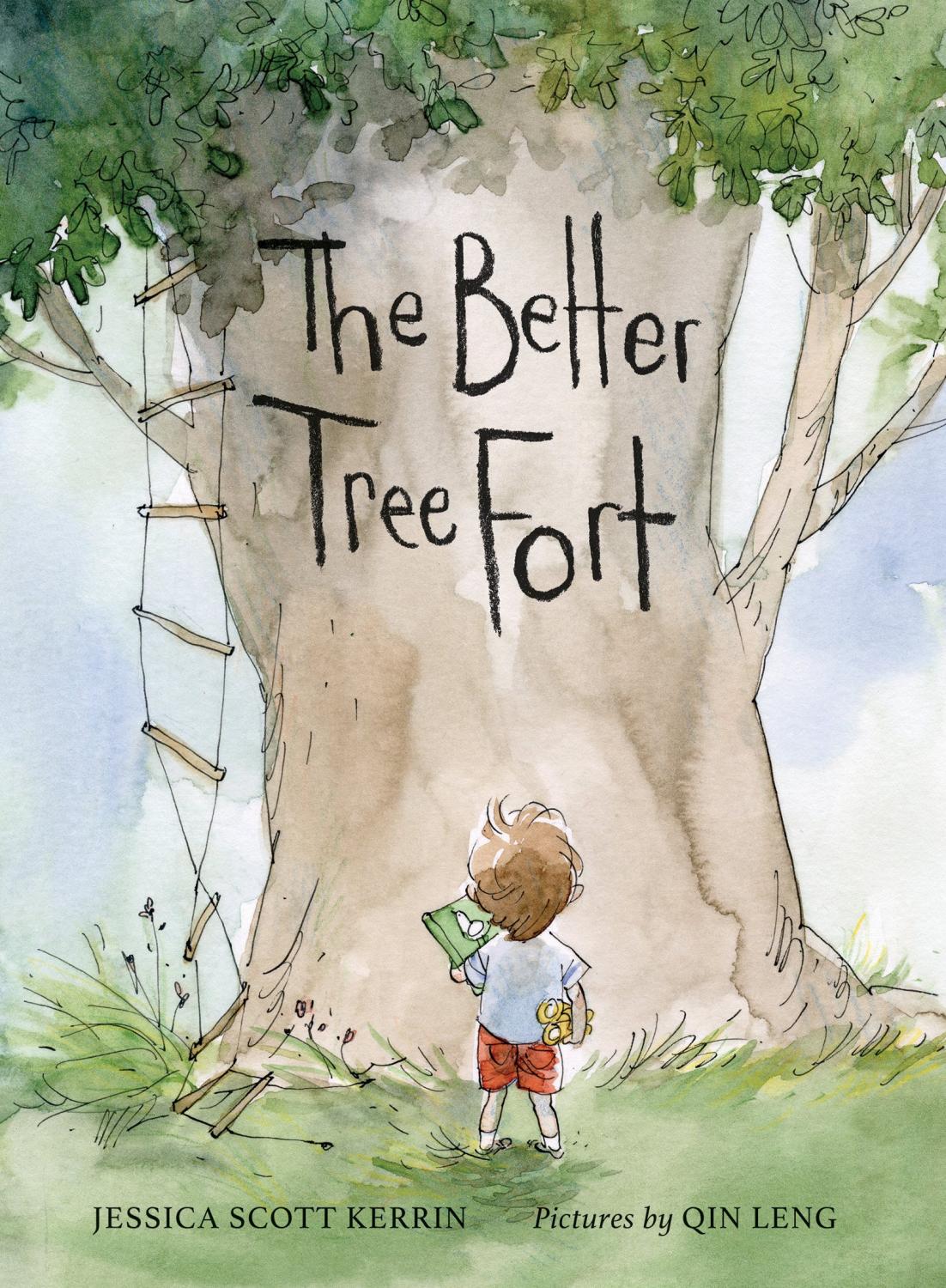
My Cat Looks Like My Dad
Written and Illustrated by Thao Lam
What’s your family like? In this hilarious story, a mysterious narrator astutely compares the family cat to the father of the house, side by side.
The list of similarities in My Cat Looks Like My Dad is long and includes the fact that both Dad and the cat have big mops of yellowish hair, with the cat’s made of fur. It turns out they both like milk and fishy-smelling sardines, plus a belly rub after a meal.
The telling of the similarities continues, in this charming book that must be read to be appreciated. By the end of the book, the mysterious identity of the narrator is also revealed!
Thao Lam’s illustrations are stories in themselves – making use of all kinds of textured, patterned, and colored paper. They are also inspired by other creators like Jon Klassen and David Wiesner. Lam’s art has appeared in Cricket and Highlight magazines, and in 2008, she won the Highlights Five Pewter Plate Award for verse illustration of the year. (Ages 4 – 8 years)
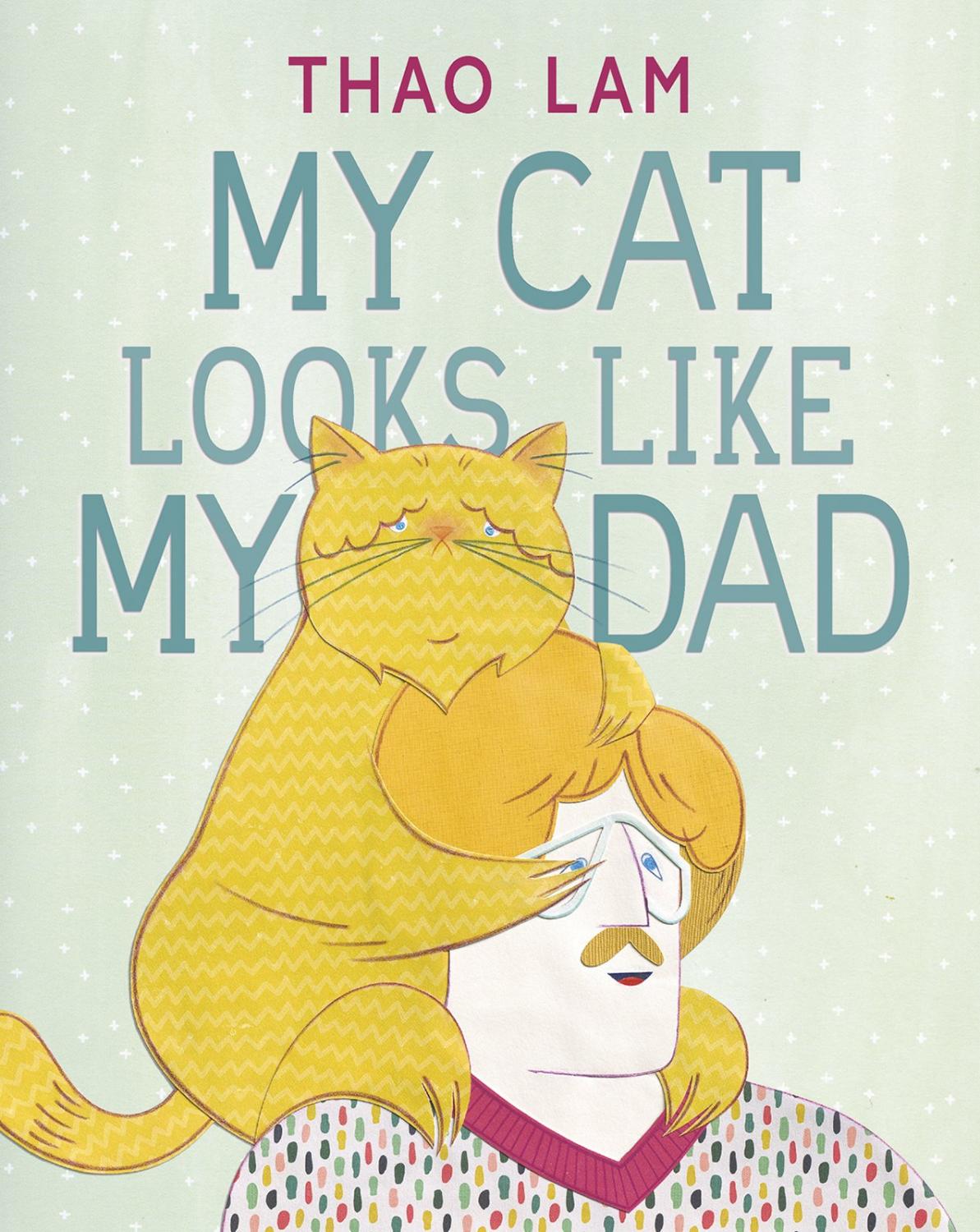
I Love You Daddy (Peter Rabbit)
Written and Illustrated by Beatrix Potter
In I Love You Daddy (Peter Rabbit), a young bunny steps out into the wide world a smart, slightly oversized overcoat and shoes. As Young Bunny steps forward, it is “a little bit easier” because Father Bunny is there to help. Young Bunny and Father Bunny explore, play, and have adventures together. At the end of the day, Young Bunny says, “And as I dream of adventures with you, / I know you will try to make them come true.”
Fans of Beatrix Potter’s Peter Rabbit will love this simple tale that celebrates fathers and their young children. The text is presented in short rhyming verse, from the point of view of a young narrator poignantly addressing his/her father. The rabbits and their world are cheerfully and sweetly depicted. (Ages 3–5 years)
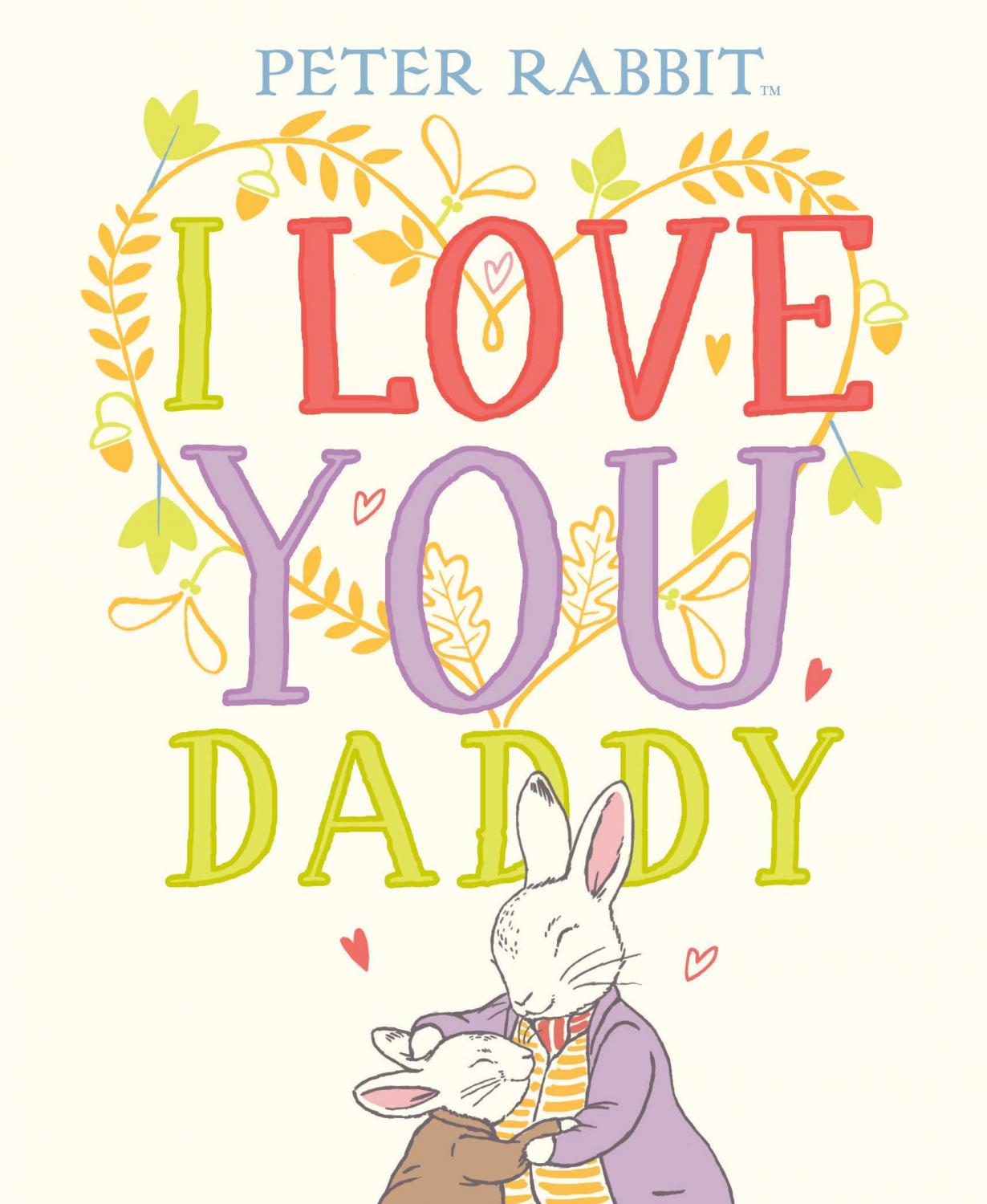
May
May is Older Americans Month, the perfect time to spotlight the value and contributions that older adults offer our communities all year long. We encourage you to explore this month’s staff picks for kids with stories about older adults who teach children how to swim to how food can be a source of bonding between people of all ages, and more.
Aprendo de abuelita / I Learn from My Grandma
Written by Lorraine Harrison, Illustrated by Anita Morra
In this delightful, short story, a young grandson tells readers of his relationship with his abuelita/grandmother. She lives far away, so he usually talks to her by video on a phone. In the summer, he gets to visit her, learning about baking bread (“Me enseña a hacer pan”), and that it is not easy! ("Me doy cuenta de que hacer pan no es facil!”). Abuelita also has a pool out back where she teaches her grandson to swim, which he loves. He also plays with his grandmother’s big, friendly dog, Maggie, and feeds her with grandmother’s help. The grandson explains that he likes learning to care for pets like Maggie. He lets readers know he’s looking forward to coming back next summer to see abuelita again and learn more.
Writer Lorraine Harrison is author of I Learn from My Grandpa, part of The Things I Learn series. Abuelita, her grandson, Maggie, and their world are brought to life by Argentinian Anita Morra, who utilizes bold ink and vivid watercolors to illustrate books in both The Things I Learn and Gracie series. Aprendo de abuelita/I Learn from My Grandma is an e-book available via the OverDrive Collection at MDPLS.
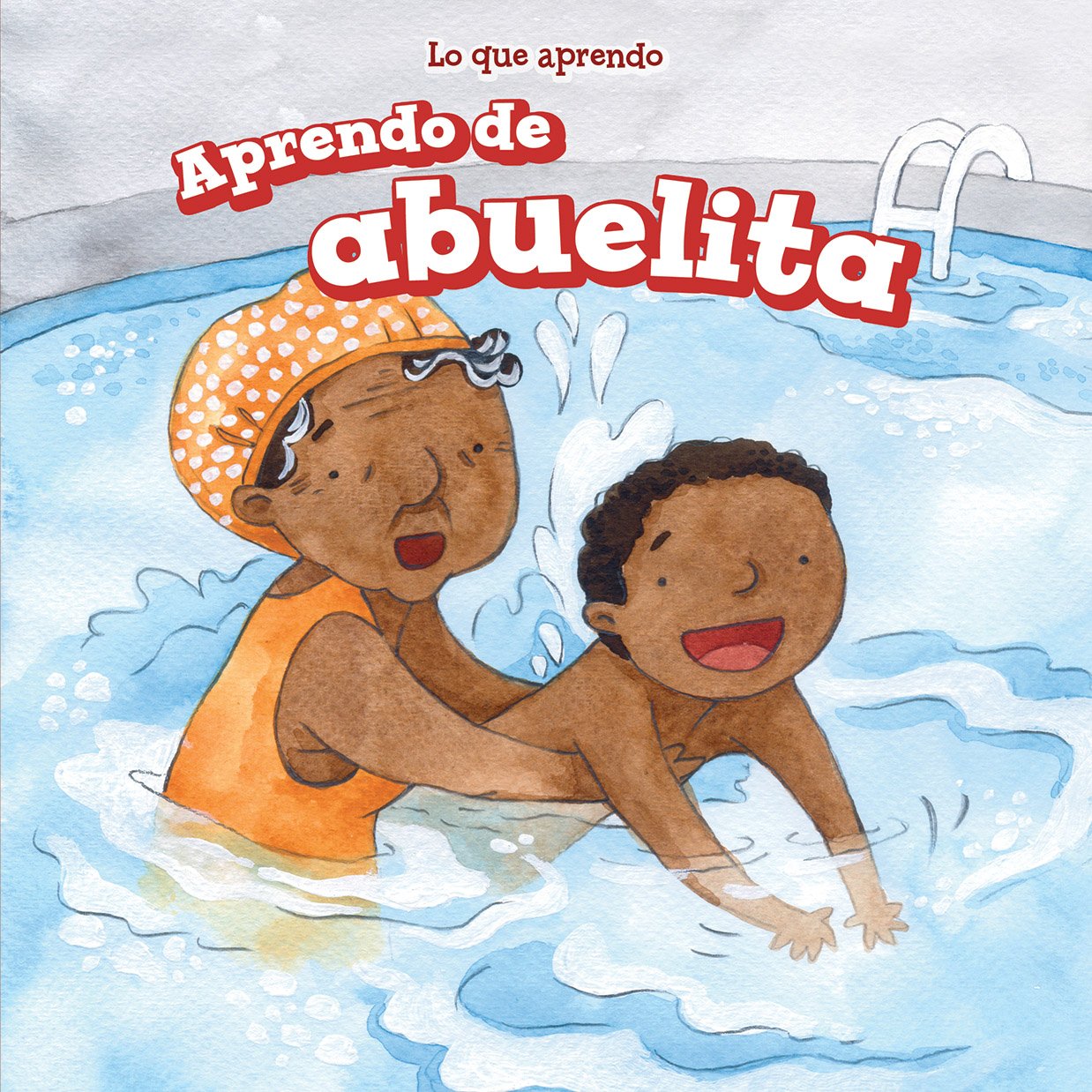
Thank you, Omu!
Written and Illustrated by Oge Mora
One day in her apartment, Omu (pronounced Ah-moo) decides to cook one of her thick, red, traditional stews in a big fat pot for a nice evening supper. She seasons, stirs, tastes, and simmers the stew on the stove. The delicious scent travels far beyond her apartment, drawing the interest of neighbors, who come by to visit her. After feeding all of them, she realizes she has given away all of her supper. Soon, the neighbors return, bringing lots of food to share as a gift for Omu.
Writer and illustrator Oge Mora, originally from Nigeria, created this book about her beloved grandma, “omu”, which means queen in the Igbo language. The colorful, vivid cut-paper designs of the characters and the settings will appeal to young readers. Thank You, Omu! is available for checkout at our branches or via the online catalog.
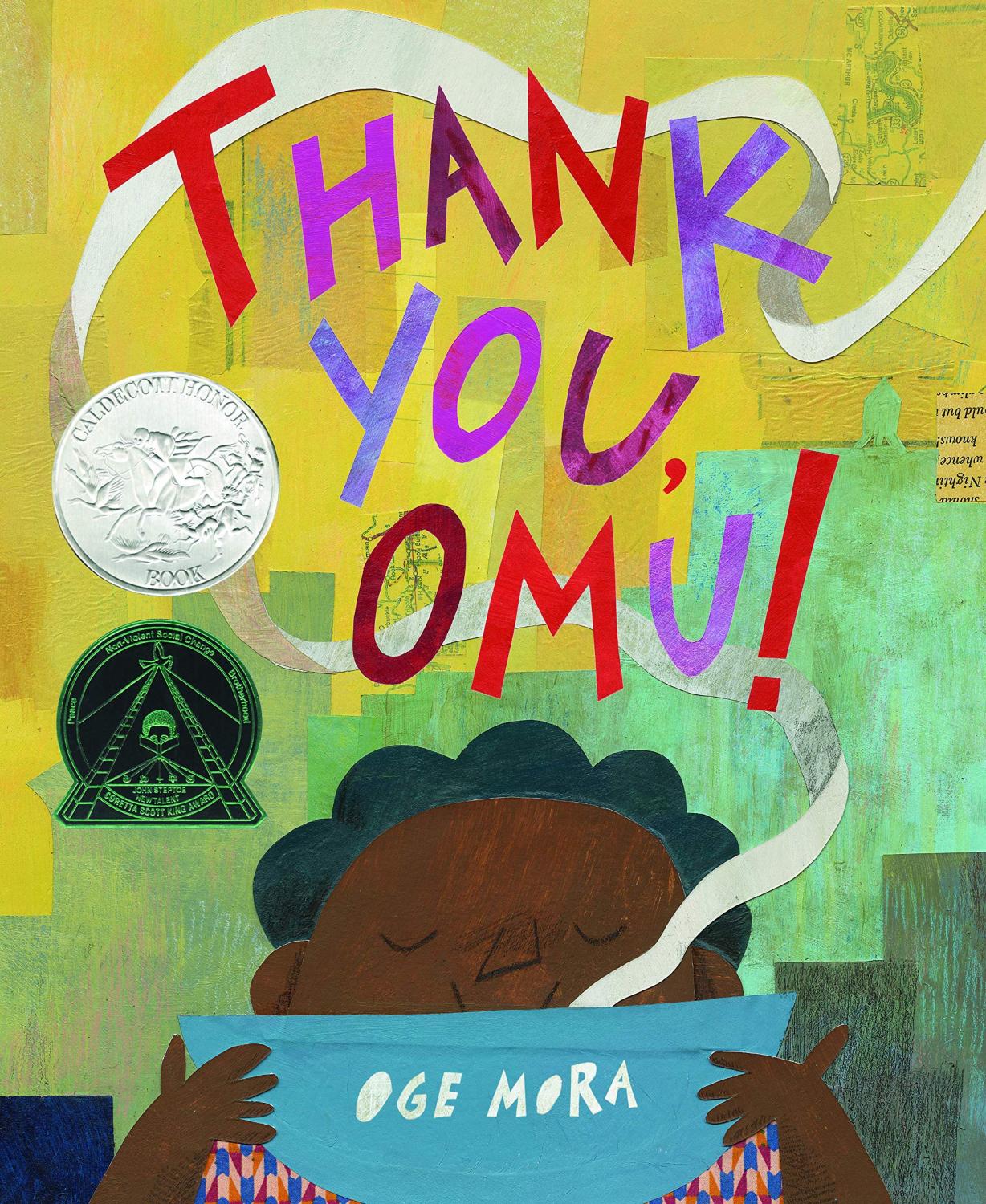
Lillian's Right to Vote
Written by Jonah Winter, Illustrated by Shane W. Evans
Lillian is a proud African American centenarian standing at the bottom of a steep hill on Voting Day. As she slowly walks up the hill, she remembers the sweep of history and her family’s experience. She recalls enslaved great-great grandparents and grandparents, who lacked the fundamental freedom and rights that African Americans have today. Edmund, Lillian’s great-grandfather, was able to vote after the American Civil War because of the 15th Amendment to the U.S. Constitution adopted in 1870. Yet, Lillian recalls the poll taxes and literacy tests that she and her family endured, that undermined their right to vote. Eventually, she reaches the top of the hill and enters the voting booth, thanks to the sacrifices, strength, and victories of so many in the Civil Rights movement including Dr. Martin Luther King, Jr. and John Lewis.
Readers of all ages will enjoy this commemoration of the signature Voting Rights Act of 1965, personified in Lillian’s story. An afterword informs readers about the real Lillian Allen, who lived to vote in 2008 for the first Black American president, Barack Obama.
In addition to writing Lillian’s Right to Vote, Jonah Winter is author of the New York Times bestseller, Barack. Shane Evans has illustrated many children’s books, as well as written his own We March!, published in 2012. An e-book version of Lilian’s Right to Vote is available in Axis360 at MDPLS.

Grandpa’s Stories: A Book of Remembering
Written by Joseph Coelho, Illustrated by Allison Colpoys
A young granddaughter and her grandfather have a special relationship through the seasons. They explore the beauty of springtime, play with toy racing cars in a vast summertime, and write and draw colorful, extraordinary dreams together on handmade paper in a beautiful notebook bound with ruby string. At wintertime, he tells her marvelous stories of his boyhood from far away, with ships, snakes, and even tigers. As each season passes, the granddaughter’s memories affirm the special bond that they share, her deep love for him and her awareness of his growing infirmities. At grandfather’s passing, she movingly relates to readers that, “If all the world were stories/I could make my grandpa better just by listening, listening, listening /to every tale he has to tell./ But some tales are silent.”
Young readers will learn about love, change, mourning, and the power of connection through the lovely words and beautiful art in this book. London based author Joseph Coelho has also written an award-winning children’s poetry collection. Australian artist Allison Colpoys has illustrated many children’s books including Captain Starfish.

Looking for Yesterday
Written and illustrated by Alison Jay
Allison Jay fittingly quotes Walt Whitman to let young readers know of, “Happiness...not in another place but this place, not for another hour but this hour.” A young grandson remembers how much he enjoyed yesterday and longs to go back and “do it all again.” But he cannot figure out how, realizing that he would have to be faster than light - “one hundred and eight-six thousand miles per second...over seven and a half times counterclockwise/around the earth every second...to get back to yesterday.” He imagines making a time machine, a super hypersonic rocket, or finding a wormhole he could shrink himself into (“to one billion trillion trillionths of a centimeter!”) Fortunately, grandad has answers and a solution to his grandson’s dilemma.
Readers will love this comical, moving story of grandfatherly wisdom and learn of the power of extraordinary memories, magnificent imaginations, and the chance of new adventures that happen every single day.
Allison Jay has written and illustrated more than thirty picture books and was inspired to write this story by her engineer father and her science loving brother. Her exquisite illustrations are striking and timeless. Characterized by alkyd oil paints and crackle glaze varnish, they are a nod to the Flemish art of Breughel and the expressionism of Basquiat. Looking for Yesterday is available through the OverDrive Collection at MDPLS.
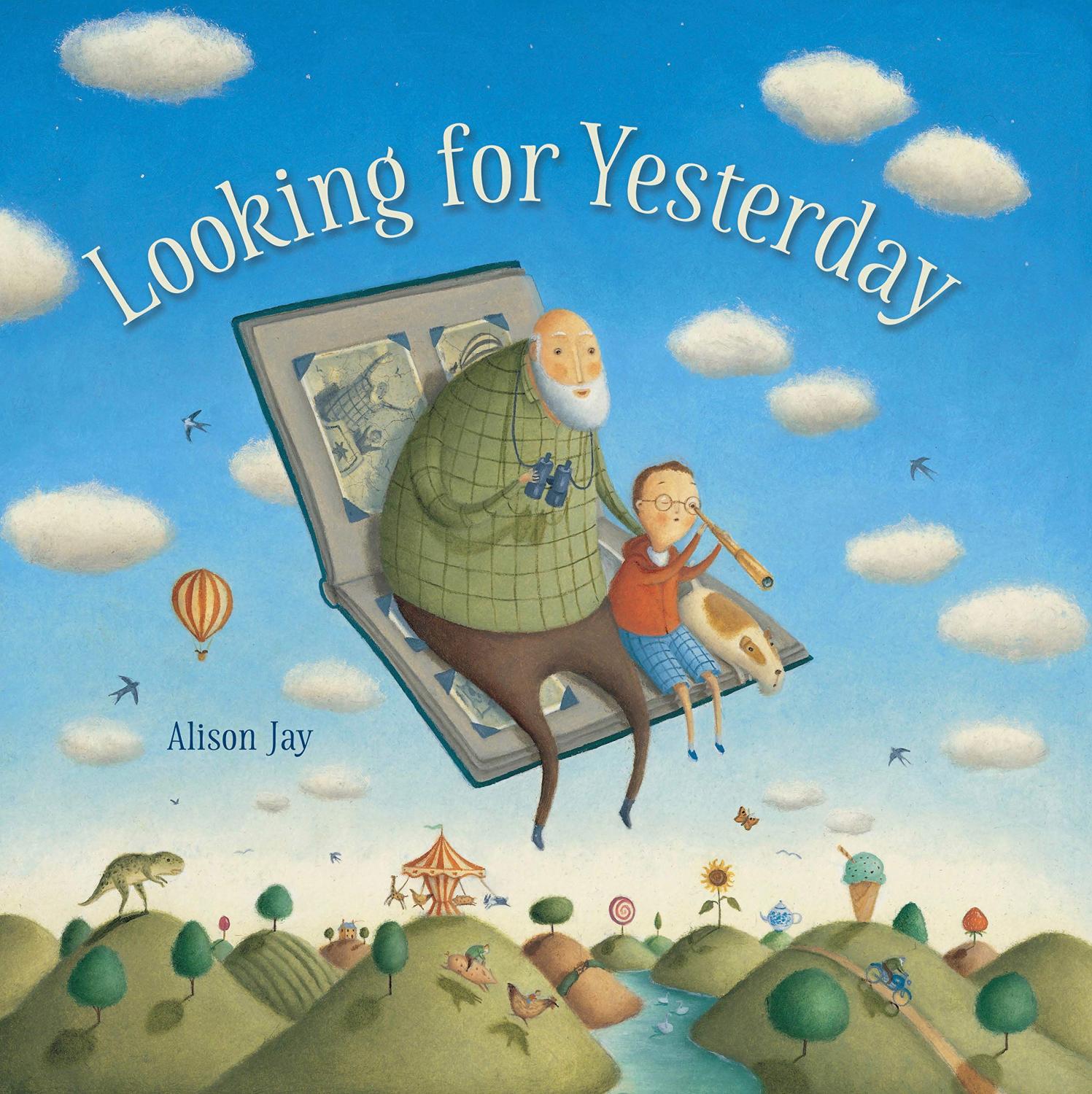
April
To celebrate Earth Day on April 22, we are taking the entire month to teach our children how to connect with and appreciate the wonders of nature. Our selection of books for April highlight that connection from the science of the water cycle, to the wonders of life underground, as well as how human beings factor into the mysteries of Mother Nature.
The Rhythm of the Rain
Written and illustrated by Grahame Baker-Smith
This beautifully illustrated story about the water cycle begins with young Isaac and a friendly lamb playing at their favorite pool on the side of a mountain. As raindrops and dark clouds appear, Isaac empties a jar of water he had into the pool. The rain carries that water downstream to the river, with it traveling over a waterfall. From there, the river flows on, getting deeper and wider. Wild creatures drink, wash and swim in it. The river winds on by flat fields that are being harvested and through cities whose inhabitants use it.
Isaac follows the path of his water by sailboat as the rivers joins with the ocean. In the ocean, Isaac spots a great whale opening its mouth as it feeds, swallowing some of the water. The water eventually evaporates, joining with the clouds, which drop rain upon a little girl who lives in Africa, with the cycle starting anew.
Grahame Baker-Smith is the author of the award-winning FArTHER. He’s also illustrated multiple books, including the recent Life! The First Four Billion Years, and even a set of stamps commemorating the 150th anniversary of the publication of Alice’s Adventures in Wonderland. His exquisite illustrations, which layer and combine drawings, traditional media, organic textures and digital techniques, will catch young readers’ eyes page after page. Together with the direct story told sweetly through Isaac and his friendly lamb, the water cycle comes to life. (Ages 4-8 years)
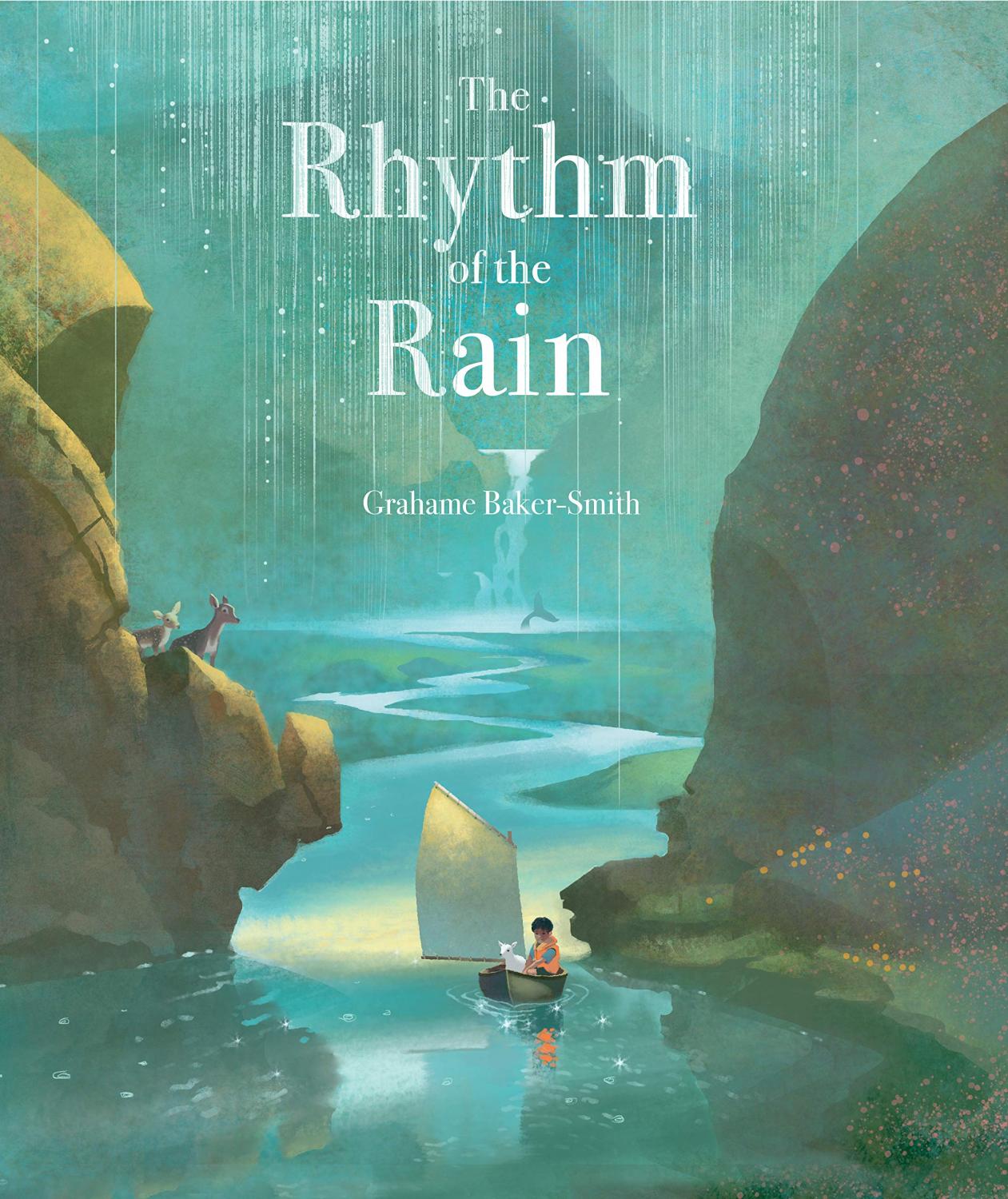
A Stone Sat Still
Written and Illustrated by Brendan Wenzel
In this profound and charmingly illustrated story, an ordinary rock, sitting still with water, grass and dirt nearby, is all things extraordinary to the creatures and the wide world it faces. It is dark in shadow for a squirrel eating upon it and bright in moonlight for an owl who lands on it. It is loud for what shell is cracked upon it, but quiet for what snake lies upon it. It can be rough or smooth for the creatures that crawl or climb on it. Its colors change with seasons, and its size varies according to whether it is viewed from the ground below or the air above.
This is a story of how “different perspectives and the passage of time can turn a seemingly ordinary stone into a site of infinite possibility.” It also shows how to avoid reducing the world and nature to one single understanding. But while the overall point of the story may seem philosophically abstract at times, the pictures and words are effective at reaching both younger and older readers (Ages 4-7 years)
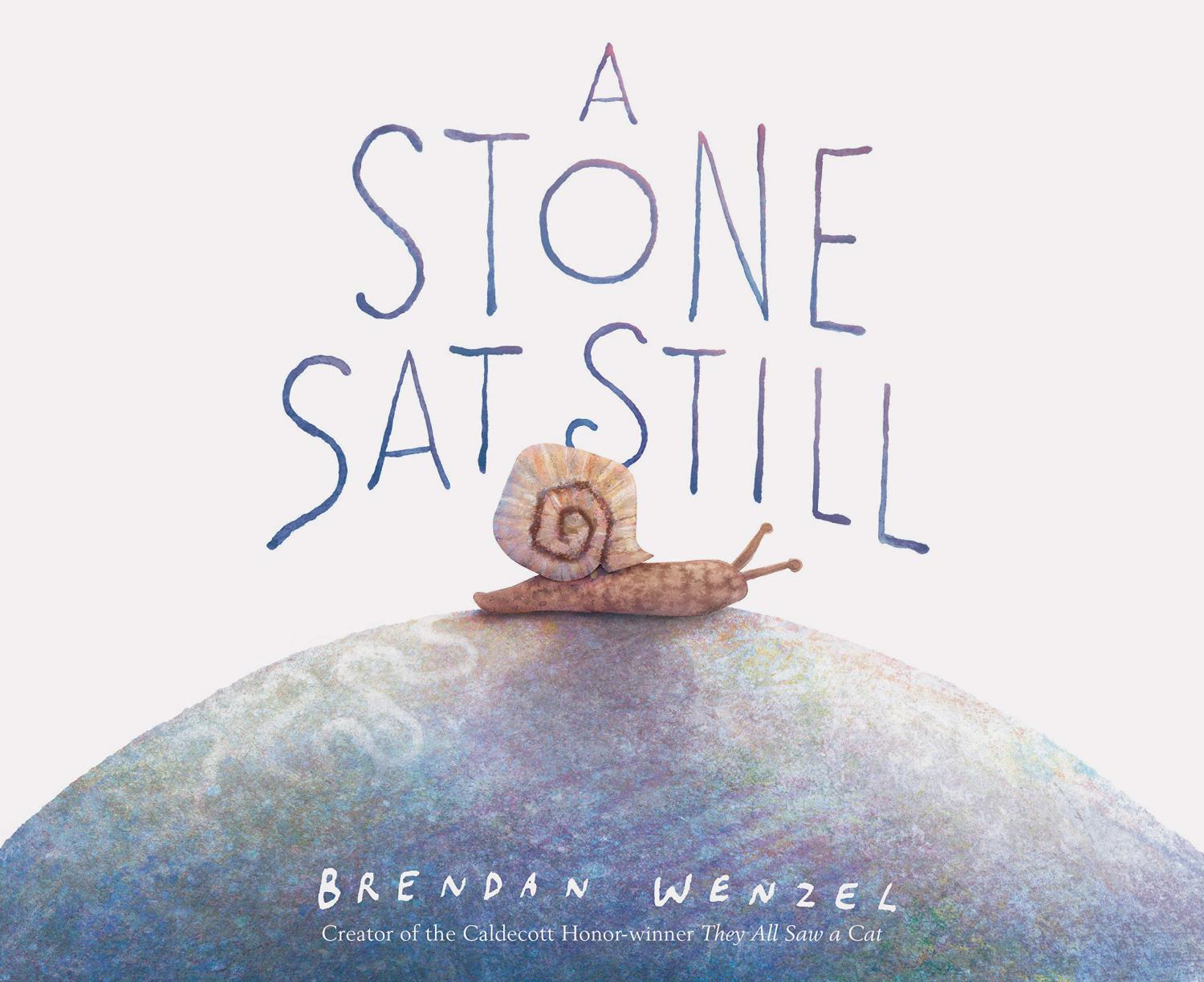
The Whole Wide World and Me
Written and illustrated by Toni Yuly
In this short, delightful story, written in verse, a young girl likens herself to the world around her and connects to nature with unbounded joy. She begins with a flower in a field, then moves on to a fish in a pond, a cloud in the sky, and firmly affirms she is among them, with, “And so am I.” She likens a wave splashing from the sea to herself, identifies herself as a pebble rolling down a mountain, and a leaf that floats from a tree, as she lies on the ground and realizes, “I am a small part of it all.”
The Whole Wide World and Me nurtures a love of nature in young readers. Toni Yuly is a native of Bremerton in Washington state. After studying fine art with famed African American painter Jacob Lawrence at the University of Washington, she was a librarian for many years before turning to writing and illustrating full-time. She is also the author-illustrator of Thank You, Bees, The Jelly Bean Tree, and three other children’s books. (Ages 3-7 years)

Thunder Underground
Written by Jane Yolen, Illustrated by Josée Masse
Jane Yolen is determined to get young readers to become aware of what’s under the ground, or what she calls “our Earth’s fast-beating heart.” With remarkably inspiring verse, she urges them to understand that “knowledge grounds a power base, so seek out knowledge touched by grace./Start below, reach for the sky, and like the caterpillar/fly.” This beautiful verse is followed by pages of poems of under-the-ground scenarios that readers likely seldom stop to think of – of seeds in the ground (“Seeds”), of corns in the fields (“Corny Conversations”), and the squeaky, clicking, clacking, muffled roar of beetles scuttling under the earth. There is also the scratching and scrunching sounds made while they eat – from which comes the title, “Thunder Underground”.
Verses describing earthworms, ants, moles, rabbits, and fossils also follow, along with others on forces of nature, including earthquakes, underground rivers, and even magma pools: “So, should we wait/An Age or two/To see what magma pools/Can do?” Some manmade phenomena are also included, as well, for good measure.
Jane Yolen is the author of the Holocaust novella, The Devil’s Arithmetic. She also wrote the award-winning short story Sister Emily's Lightship, the novelette Lost Girls, Owl Moon, The Emperor and the Kite, the Commander Toad series and How Do Dinosaurs Say Goodnight. Montreal-based Josée Masse has illustrated for the American Girl series, as well as What Ship is not a Ship and Follow, Follow. (Ages 7-11 years)
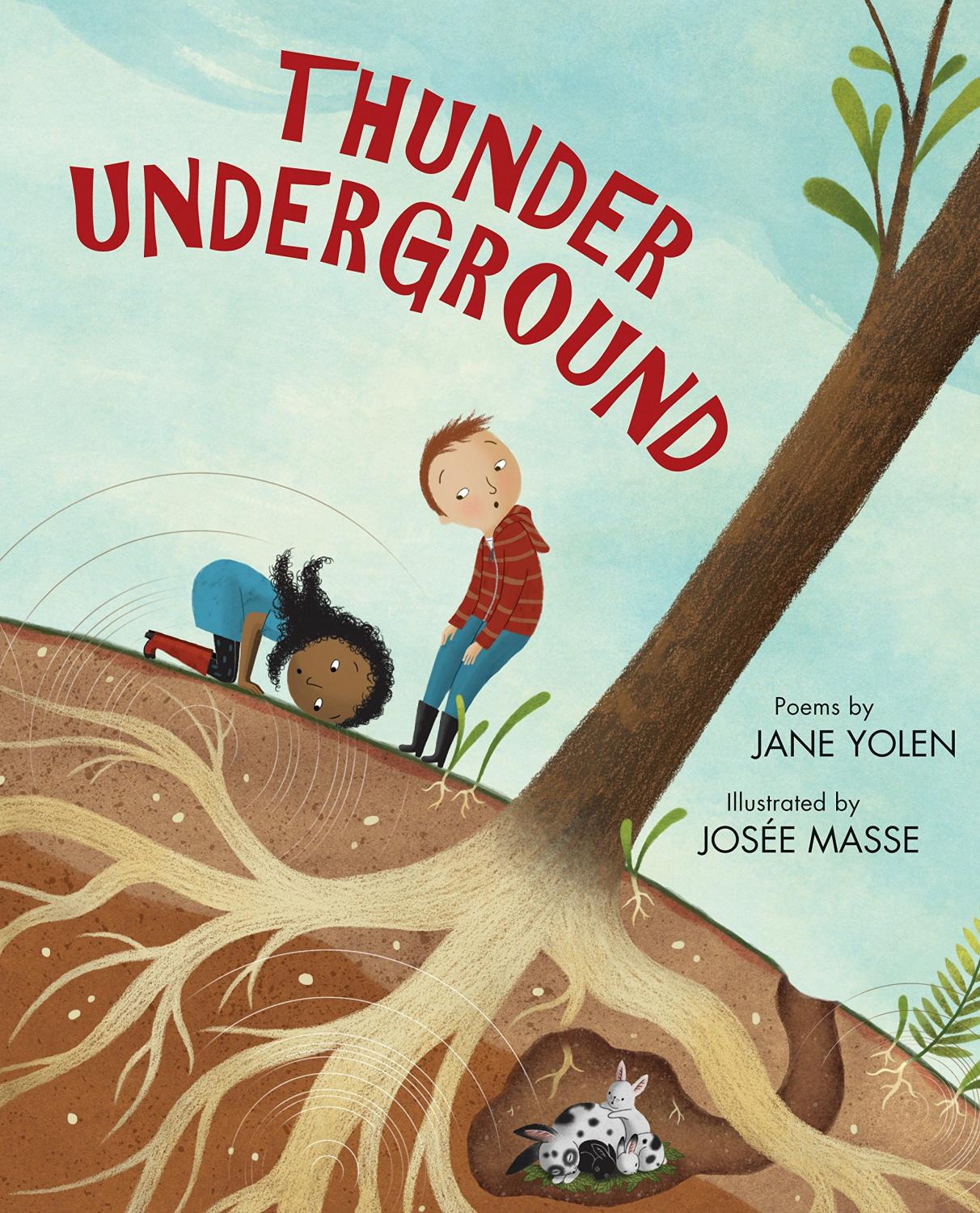
My Head in the Clouds
Written by Danielle Chaperon, Illustrated by Josée Bisaillon
This amusing story is for travelers who are forever leaving behind things on their travels around the whole world! The story is told through the eyes of a brave, curious, adventurous young woman loves to travel, and who loses things along the way.
At the Olympic Stadium in Montreal, she forgets her scratch sweater (and her socks!). On Mount Everest and at the Giza Pyramids, she leaves her best jacket and her polka dot swimsuit, respectively! At the Taj Mahal, she forgets all three suitcases, plus a tooth of hers falls out! She also nearly misplaces her mother in a vast desert, loses a favorite hat to a giant squid in the Mediterranean Sea, and leaves a Stradivarius violin on a Russian roller coaster – goodness! Read the rest to find out what else the woman loses and where!
Young readers will laugh at the comical scenes that accompany the narrative verse and will come to love the woman’s pup, LouLou, who accompanies her on each adventure around the world. There is also a glossary of interesting trivia facts to challenge readers’ knowledge of these places, as well as maps of the world pinpointing the location of each destination.
Josée Bisaillon has illustrated more than 25 children’s books, including the award-winning The Snow Knows and The Emperor’s Second Hand Clothes.
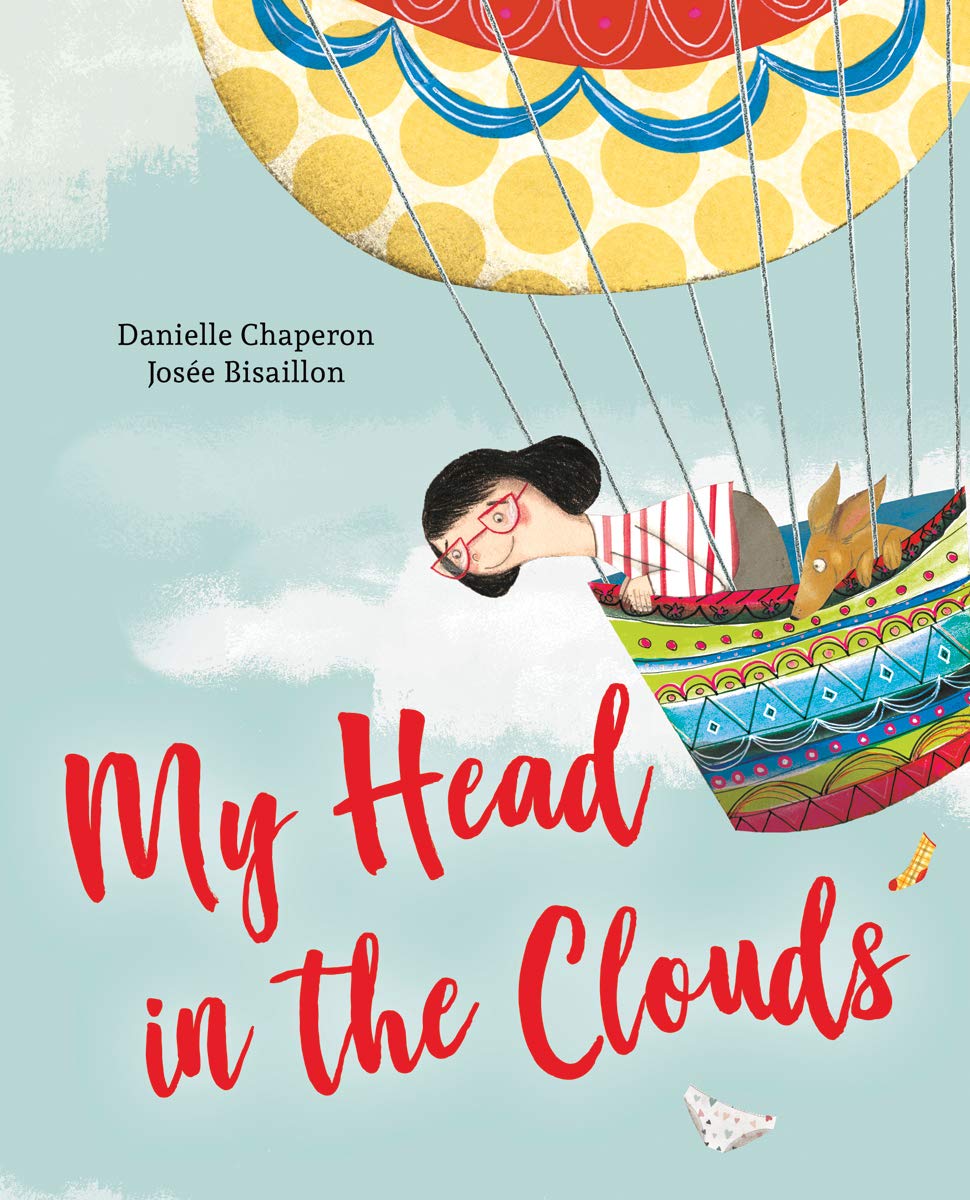
March
This month’s Staff Picks highlight the important gains and achievements of women in celebration of Women’s History Month. From Harriet Tubman’s journey before she rescued slaves via the Underground Railroad, to Margaret Hamilton’s groundbreaking work as a software engineer during the Apollo Moon Landing, this month’s selection of books features inspiring stories of women who defied expectations and paved the way for others to achieve their dreams.
Margaret and the Moon: How Margaret Hamilton Saved the First Lunar Landing
Written by Dean Robbins, Illustrated by Lucy Knisley
From the time she was a child, Margaret Hamilton, who was among the first to call herself a “software” engineer, loved to solve problems. She worked harder than most to overcome the limitations society imposed on her, particularly in mathematics.
Her poet-philosopher father fueled her curiosity and imagination and encouraged her to pursue computer science – a career field that until recently was reserved for men. As an adult, she used fledgling computers to find answers to questions about the universe and wrote code for them. Her proficiency and talent brought her to the attention of National Aeronautics and Space Administration (NASA), which hired her as the director of software programming for the Apollo Moon Landing. Her leadership and imagination were essential to the success of the first lunar landing.
Fans of the Black female NASA scientists featured in the movie Hidden Figures will find parallels with Margaret’s story in this book, which includes a great author’s note, as well as a bibliography and additional reading list. Lucy Knisley’s illustrations make Margaret’s inspiring story endearing and relatable to younger readers. (Ages 6-10 years)

Before She Was Harriet
Written by Lesa Cline-Ransome, Illustrated by James E. Ransome
We know Harriet Tubman as the brave, African American woman who provided aid and shelter to enslaved Black adults and children who escaped captivity from white slave owners. But what is the story that led up to this time and how did she continue in the face of unrelenting brutality and violence.
In short, stirring verse, young readers go back in time to when Harriet was a suffragist, a person who advocated for a woman’s rights in marriage, court and the voting booth. During her life, Harriet was a spy for the Union, which fought to end slavery during the Civil War. She was a nurse, tending with bandages and care to those wounded in the war. She helped her parents flee slavery to Canada. And she was “Moses,” helping Black Americans elude people who sought to capture them and return them to slavery. The book also harkens back to a time when Harriet was a slave named “Minty.”
The text is beautifully illustrated by award-winning artist James Ransome. Harriet’s face is particularly striking, for its detail and expressions as she ages. It is an inspiring book about unflinching love and dedication to justice. (Ages 6-10 years)
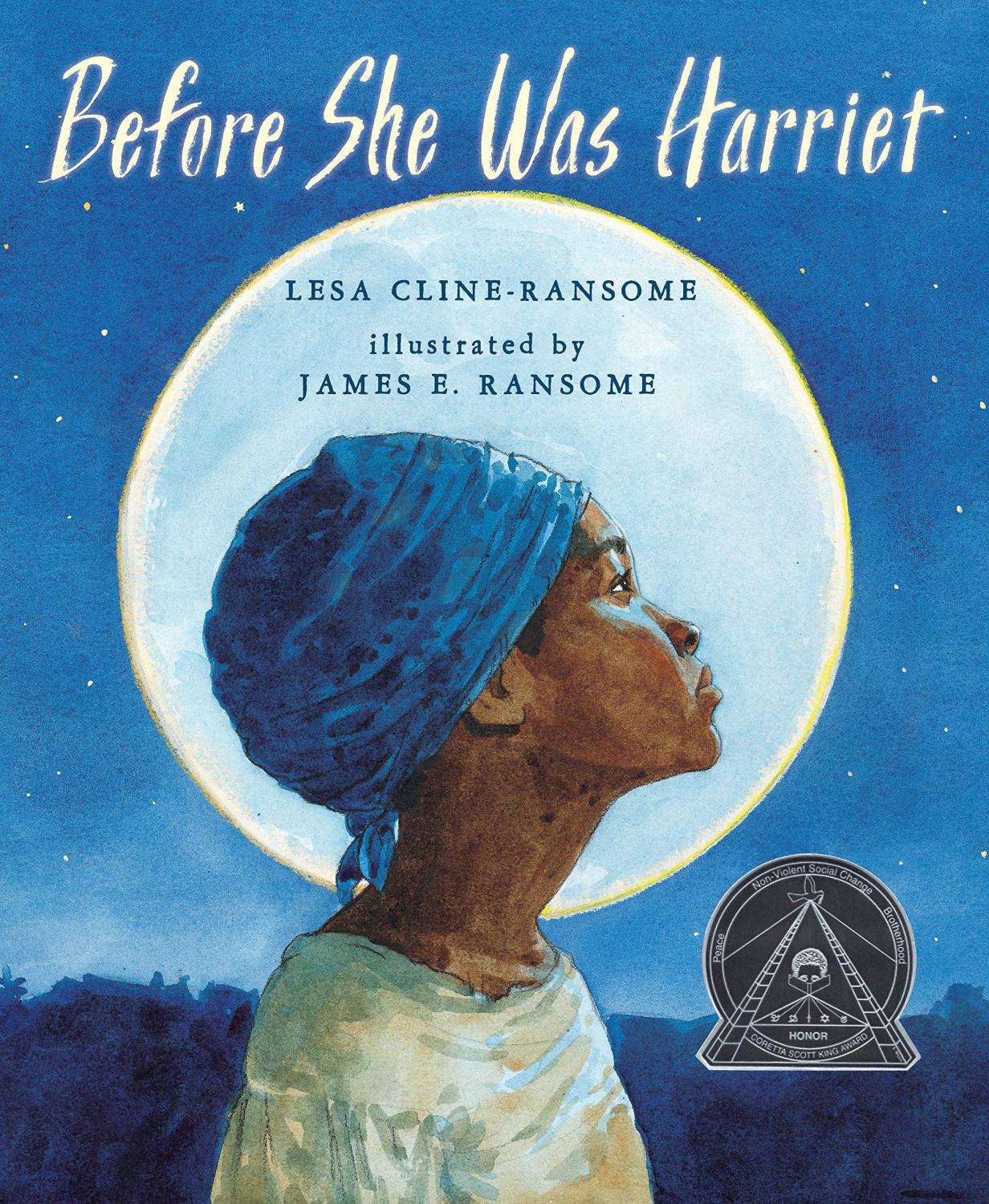
Hedy Lamarr’s Double Life: Hollywood Legend and Brilliant Inventor
Written by Laurie Wallmark, Illustrated by Katy Wu
What keeps computers and mobile phones protected from hackers? A breakthrough technology Hollywood starlet Hedy Lamarr invented more than a half century ago called “frequency-hopping spread spectrum” that helps keep them safe today.
Despite her brilliance as both an actress and inventor, Hedy had to convince people that her brain power rivaled her star power. After a long day of acting, Hedy rushed home to the inventor’s workshop she created to work on her science and engineering ideas.
Her passion for finding new ways to do things was nurtured by her father, who exchanged ideas with his young daughter as they walked through their hometown in Vienna, Austria in the early 1920s.
As an adult, Hedy acted in many popular movies, which made her a film star at the same time her adopted country, the United States, fought in World War II. A chance conversation with a musician who was also a weapons inspector led her to experiment with and invent a new guidance system for remote controlled weapons with directions that were sent on changing frequencies and in short bursts. The innovation was designed to prevent enemies from tampering with the guidance systems of things like torpedoes.
Although the technology was not implemented in time for the war, it is the foundation of protections incorporated into mobile phones today.
Interspersed between Laurie Wallmark’s narration are inspiring quotes including, “Hope and curiosity about the future seemed better than guarantees.” There is also a timeline and a longer explanation of her invention at the end of the book. Together with Katy Wu’s delightful illustrations, the author’s story of Hedy’s invention is fascinating and enjoyable to read. (Ages 7-10 years)
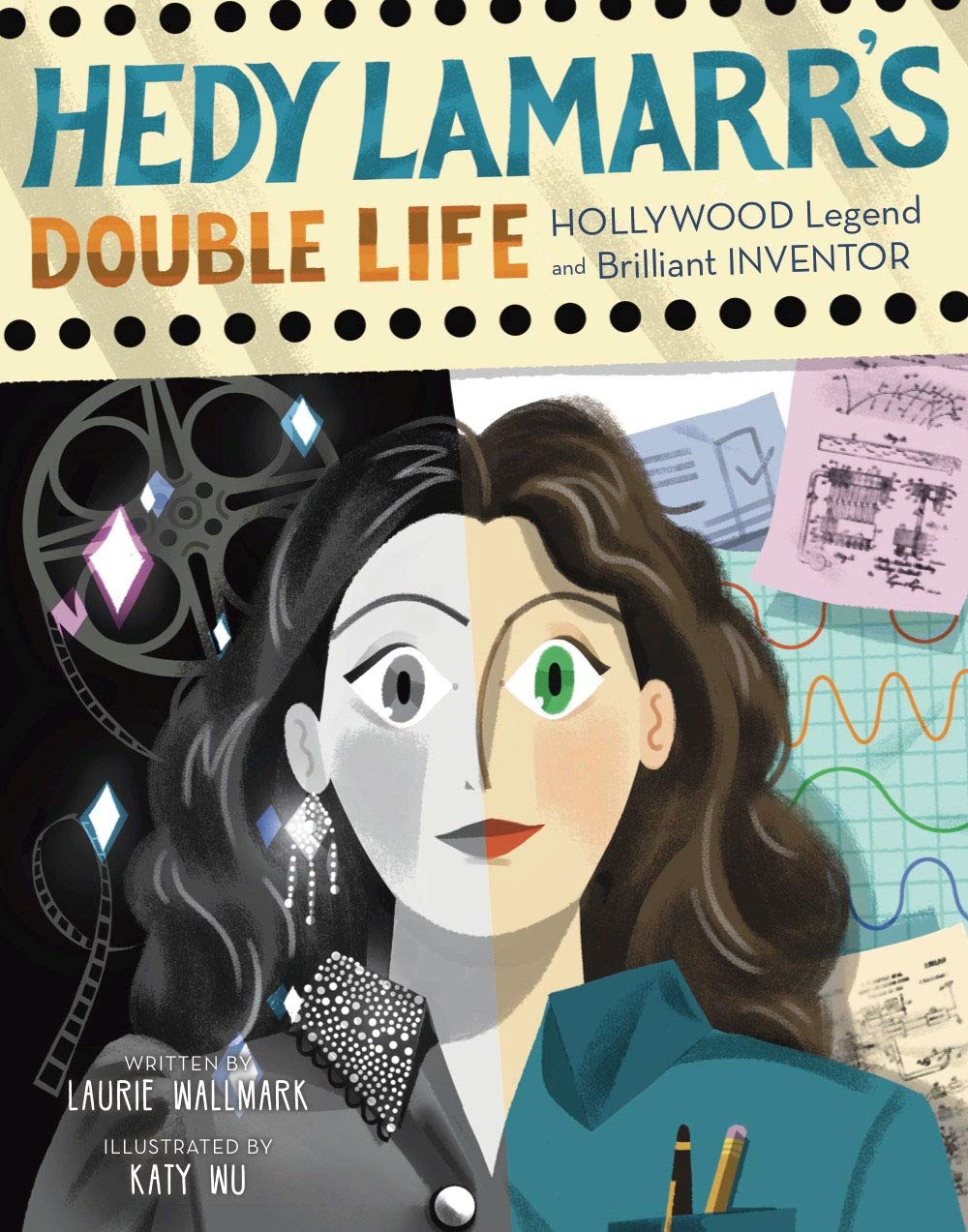
Jane Goodall: A Champion of Chimpanzees
Written by Sarah Albee, Illustrated by Gustavo Mazali
If we know much at all about chimpanzees, it’s thanks largely to primatologist Jane Goodall. From a young age, Jane loved watching animals and playing with Rusty, a neighborhood dog. Jane dreamed of going to Africa to study animals there, and upon receiving an invitation to visit from an old school friend living in Kenya, she jumped at the chance. A chance meeting with the famous Dr. Louis Leakey and a job offer to study chimps in the wild led Jane to set up camp in Tanzania. Living and working alongside chimps was hard and required much fortitude, hope and patience, but eventually Jane would gain their trust and make fascinating discoveries about them and their families. She also continued her education, married, and had a family of her own.
Sarah Albee is the best-selling author of many children’s books including Accidental Archaeologists: True Stories of Unexpected Discoveries. Gustavo Mazali, an illustrator of comics and children’s books, provides simple and beautiful drawings that help young readers understand and visualize Jane’s life, the chimps and their world. (Ages 5-8 years)

One Plastic Bag: Isatou Ceesay and the Recycling Women of the Gambia
Written by Miranda Paul, Illustrated by Elizabeth Zunon
Isatou Ceesay of Republic of the Gambia in West Africa comes to realize how dangerous discarded plastic bags had become in her village when goats died from eating them. The bags also littered gardens and became breeding puddles for mosquitoes that carried disease.
Desperate to find a productive use for the bags, Isatou and her friend, Peggy, come up with an idea: to wash and cut them into thin strips that could be collected into spools of thread for crocheting. Even with the help of other village women, crochet work was painstakingly slow (“ndanka” in Wolof, a language spoken in The Gambia) and the women were even made fun of for their efforts. Nevertheless, the women persevered, creating intricately woven crocheted purses, which they took to the nearby city to sell. As demand for the purses increased, Isatou and her friends earned more income to invest in their village, empowering themselves and their community to recycle more and become healthier.
Young readers will feel they are inside Isatou’s world, as Miranda Paul uses Wolof words throughout the story and provides a glossary and pronunciation guide for them. Elizabeth Zunon, originally from the Ivory Coast, beautifully illustrates Isatou, the Gambian women of this story and their customs including their clothing, with art that uses bold collages of colorful paints, paper, and yes, even plastic bags. (Ages 5-8 years)
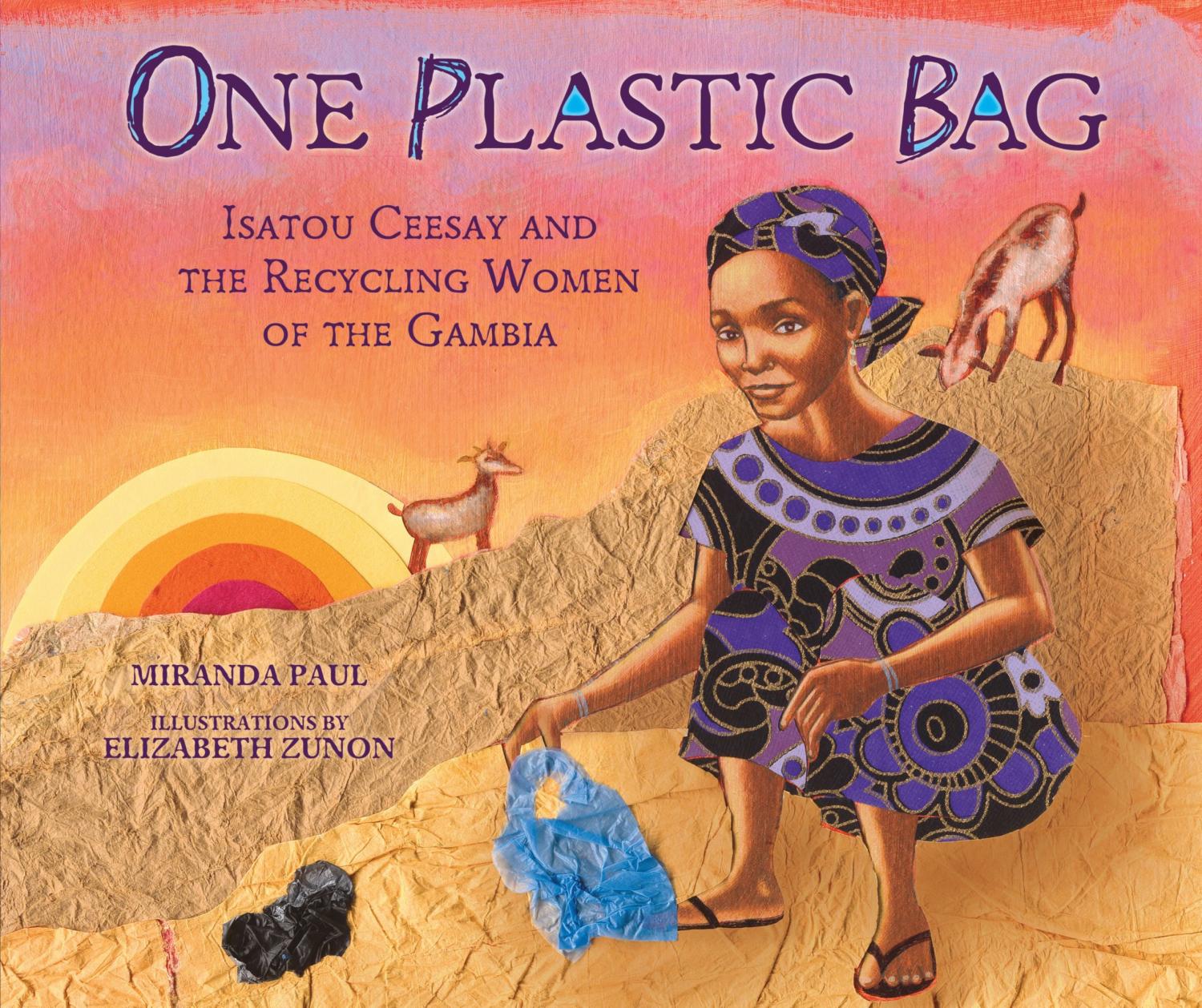
February
Every year Black History Month celebrations in February commemorate the accomplishments and struggles of African Americans. Recent events demonstrate that our country continues its long journey as it comes to terms with existing inequities and issues of race. This month’s Staff Picks highlight books that give children hope that a world of equality and empathy is still within their reach.
Parker Looks Up: An Extraordinary Moment
Written by Parker Curry & Jessica Curry, Illustrated by Brittany Jackson
Parker Curry is a little girl who loves to dance in her favorite sparkly pink tutu at dance class. One day, though, Mom suggests going to the National Portrait Gallery instead, together with Parker’s little sister Ava. Much to Parker’s delight, her best friend Gia and Gia’s mother are there to meet them for what turns out to be a fun outing. There are all kinds of paintings of curious people, places and things for Parker, Gia and Ava to gaze at. The little girls have terrific fun in the playroom and pretend to be like the ballet dancers they see in various paintings. But then Parker looks up and sees a portrait of a seated, beautiful African American woman wearing a majestic, magical gown. The woman reminds Parker of all her female family members, as well as herself, and inspires her imagination to see a future of endless possibilities. The portrait is of former First Lady Michelle Obama.
Readers of all ages will enjoy viewing famous portraits through a young person’s eyes and guessing the subjects of the portraits and the names of the artists who painted them. They will also love Brittany Jackson’s endearing portrayal of Parker and her world, through her large, sparkling, intelligent brown eyes. (Ages 3-7 years)
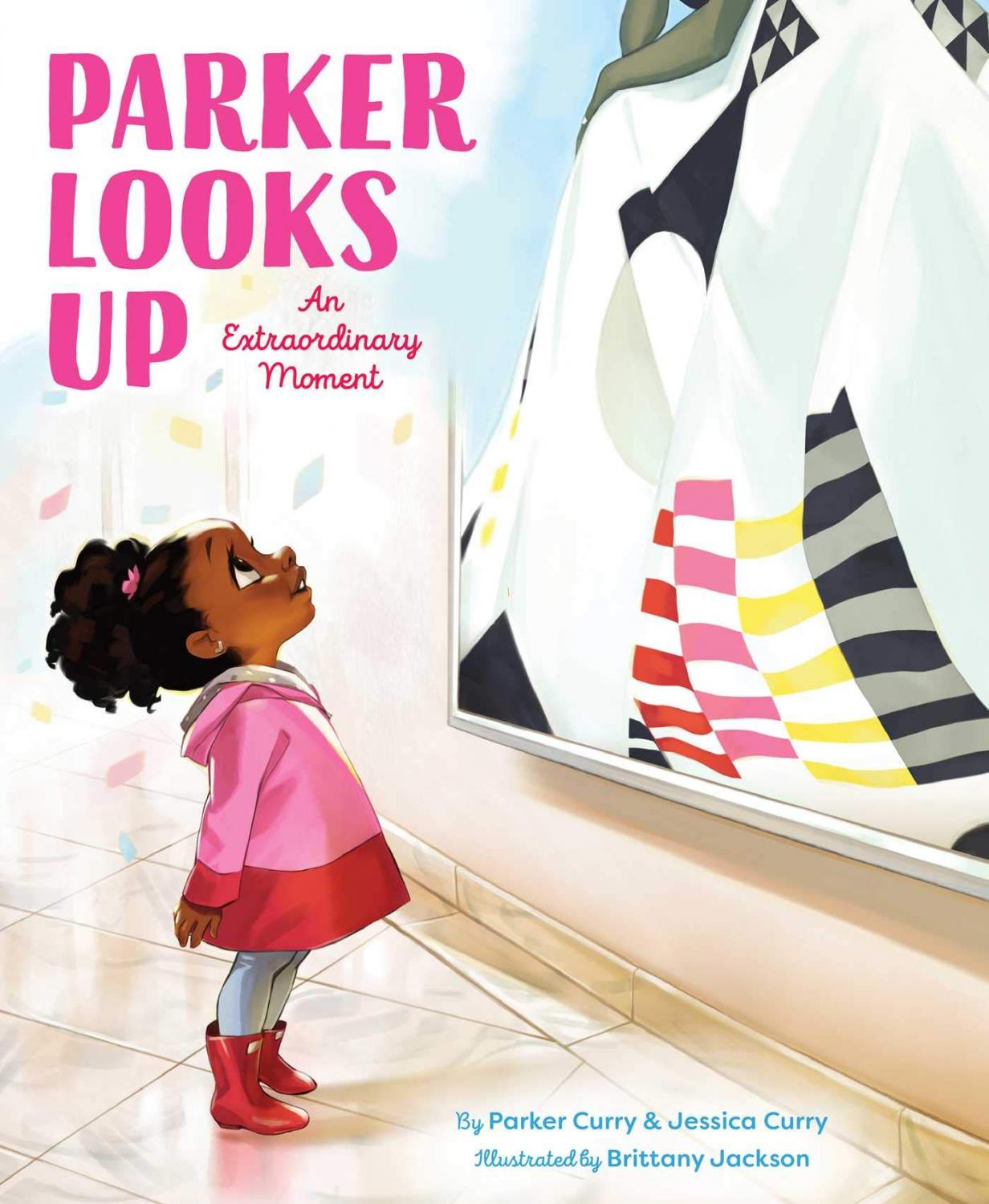
Mae Among the Stars
Written by Roda Ahmed, Illustrated by Stasia Burrington
Mae dreams of seeing the Earth “from out there.” Mae’s mother says she can become an astronaut if she dreams, believes and works hard for it. At the library, they search for books about space and astronauts, and Mae begins to read, draw and learn more about space and how far away it is. She even makes her own astronaut costume out of cardboard boxes and an old curtain. In her dreams, however, it is close, and she describes it to everyone she encounters, including her classmates and teacher, Miss Bell. Her teacher is discouraging, though, and her classmates only laugh at Mae’s dreams. Mae’s parents continue to support and encourage her, and many years later, after attending college and becoming a medical doctor, she applies to NASA and becomes the first African American female astronaut.
Somali-born Roda Ahmed grew up in Norway and graduated with a degree in anthropology from the Norwegian University of Technology and Natural Sciences, and was a Norwegian newspaper columnist. Her debut novel, Forberedelsen (The Preparation), is an award-winning bestseller in Norway. In addition to loving sci-fi and science, Seattle-based Stasia Burrington is a full-time illustrator. (Ages 4-8 years)
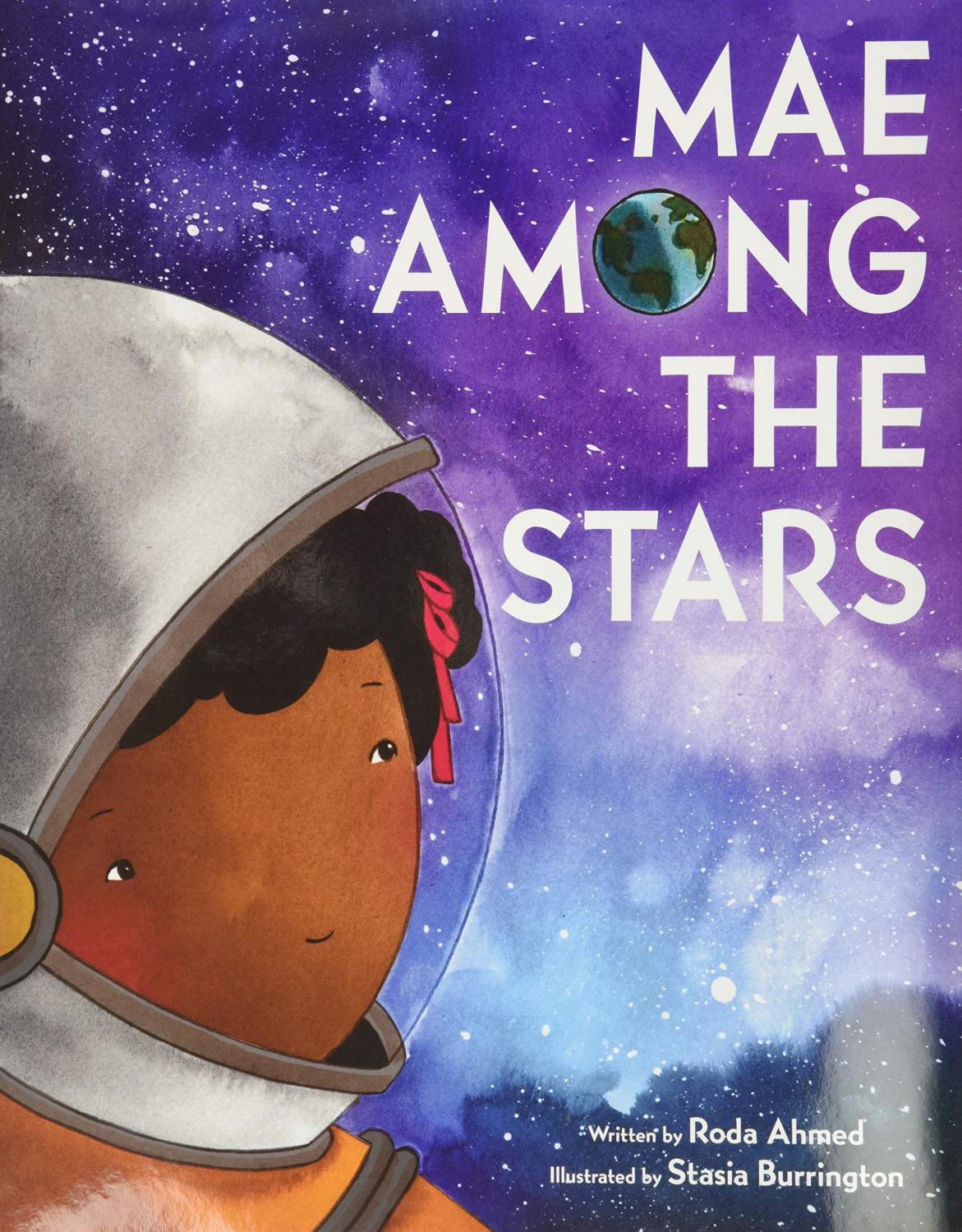
The Undefeated
Written by Kwame Alexander, Illustrated by Kadir Nelson
In a direct, strong, yet tender voice, Kwame Alexander writes a poetic tribute to many known and unknown African American heroes across the centuries. The narrator begins with Olympic runner and medalist, Jesse Owens, who he describes as, “The swift and sweet ones/who hurdled history/and opened a world/of possible.” Ordinary African Americans who survived in America and those who did not are also addressed by the narrator – including the ones who worked in chains (literally) and the ones that used their faith to keep their families intact. Harlem Renaissance figures, black veterans of America’s wars, and Civil Rights marchers, as well as the many activists still out there today, are all hailed. In the climax, the narrator brings the readers’ attention to the unspeakable suffering and violence of slavery and racism and the lives of black men, women, teens and children adversely changed or ended too early. The narrator ends with a positive affirmation for all: “This is for the undefeated. This is for you. And you. And you. This is for us.”
Kwame Alexander is the award-winning author of numerous children’s and teen’s books, including The Crossover series of teenage twins that are junior high basketball stars. This picture book features some of Kadir Nelson’s incredible paintings, which have gained national attention, and are hung on the walls of the Smithsonian and featured in The New Yorker and Sports Illustrated. They are also on album covers for Michael Jackson and Drake. Nelson also authored, We are the Ship: The Story of Negro League Baseball. (Ages 7-10 years)
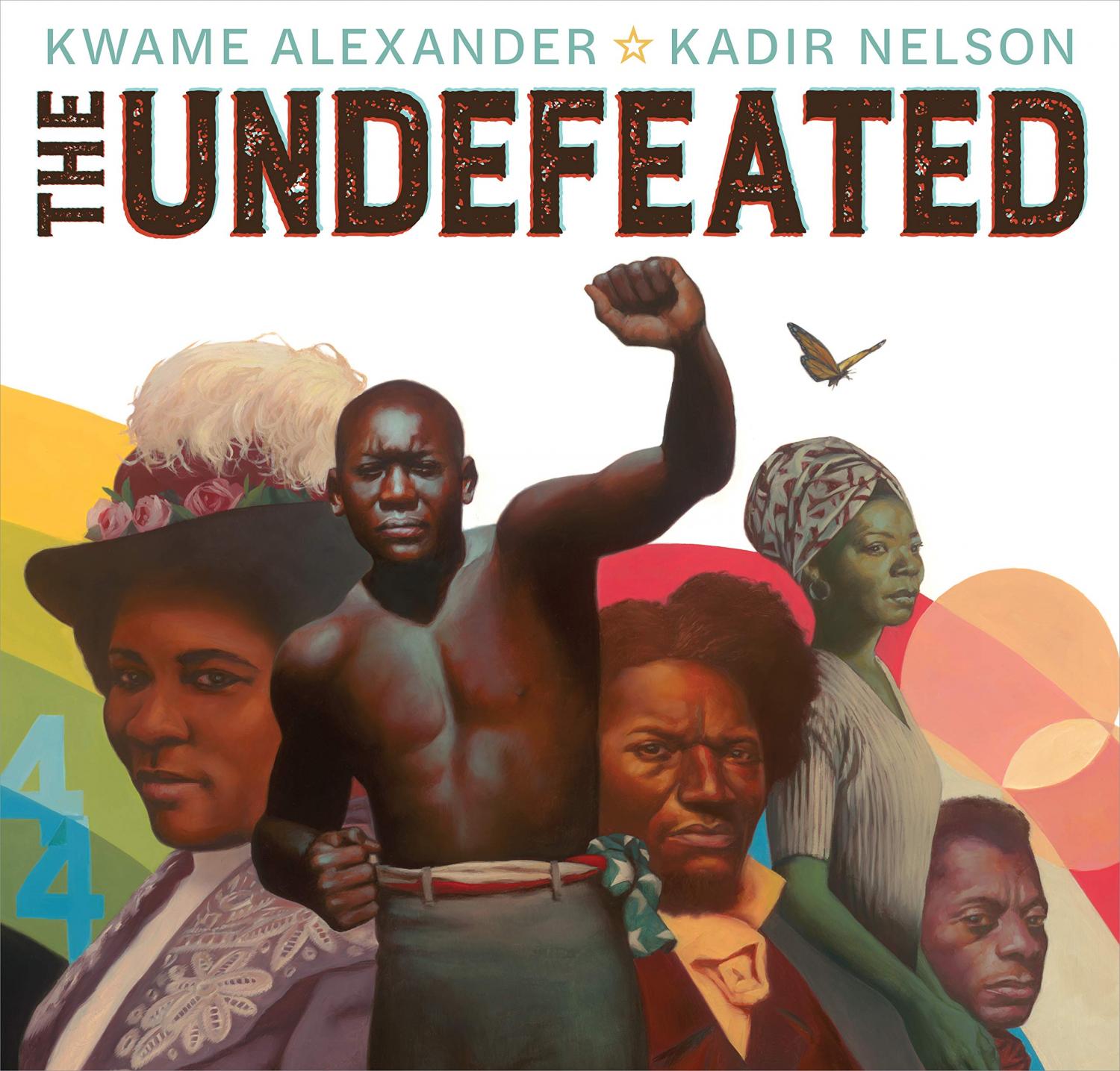
Grandpa Stops a War: A Paul Robeson Story
Written by Susan Robeson, Illustrated by Rod Brown
Paul Robeson’s deep, rumbling voice and screen fame captivated modern 20th century America, but his story is more complex. Long before he was unfairly branded by the House Un-American Activities Committee as a Communist sympathizer in 1956, Robeson had been a renowned college football player, law student and Civil Rights activist at home and abroad. In this book, his granddaughter, Susan Robeson, shares the true story of her grandfather’s mission of peace to the frontlines of the Spanish Civil War in 1938. With the help of a Spanish friend, Robeson was able to reach Teruel, where many weary Republican Loyalist soldiers welcomed him and helped him perform on the actual battlefield to all who could hear – including Franco’s Nationalists (the enemy).
Susan Robeson is the author of The Whole World in His Hands: A Pictorial Biography of Paul Robeson, which was an ALA best book for young adults. Fine artist and award-winning illustrator Rod Brown’s artwork has been featured in museums and on national TV, as well as in the books We Troubled the Waters and Freedom’s a-Callin’ Me authored by Ntozake Shange, and From Slave Ship to Freedom Road by Julius Lester. (Ages 7-10 years)

This is Your Time
Written by Ruby Bridges
At the tender age of six, Ruby Bridges was the first black student to integrate an all-white elementary school in the South after the U.S. Supreme Court’s landmark ruling. In this wonderful narrative written by Ruby herself, younger audiences and readers for whom she wrote this book get to meet older Ruby and hear her story. Attending the William Frantz Elementary every day in the early 1960s, Ruby and her mother were escorted by federal marshals, who were there to protect her from angry segregationists.
Fortunately, Ruby enjoyed learning from her teacher Mrs. Henry, who made school fun and made sure Ruby “learned everything she needed to know.” Ruby’s father, a decorated war hero, lost his job due to the racist backlash of Ruby attending William Frantz. Only as she grew older did Ruby understand the historical significance of events surrounding her then. To young school children, she urges, “I am so inspired by you and by everyone out there making change happen. I know, and you must remember… what can inspire tomorrow often lies in our past.”
In addition to the short and eloquently written narrative by Ruby, there are photos of her, her family, the school, Mrs. Henry, friends she made at William Frantz and kids she has met at the talks she gives today in school classrooms. The book also includes Civil Rights era photos from her school and famous leaders and young peace activists, as well as recent demonstrators responding to George Floyd’s death. The book’s cover features Norman Rockwell’s famous painting commemorating Ruby, published in Look magazine on January 14, 1964. (Ages 7-10 years)
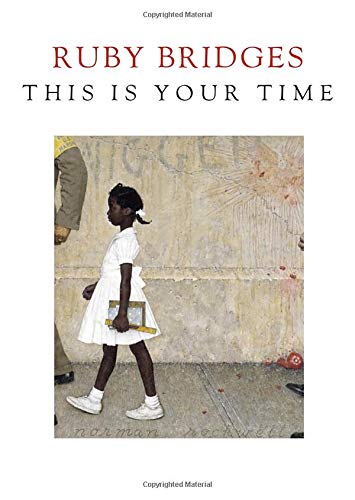
January
Seldom has a new year ever been welcomed with more anticipation and hope. Wherever you are from, chances are last year was among your most difficult ever. This month’s selection of books remind us that there is always hope on the horizon. Whether you take your inspiration from the music of John Lennon, the selflessness of Dr. Martin Luther King Jr., or from fantasy, traditional celebrations and customs, you will find that each book is full of hope and a wonderful way to have our children view the upcoming twelve months.
Imagine
Written by John Lennon, Illustrated by Jean Jullien
Young readers are introduced to John Lennon’s beautiful and famous song, “Imagine,” through the story of a passenger pigeon’s quest to spread a message of world peace. Along with the mail stuffed in his carrier bag, Passenger Pigeon carries an olive branch. Our protagonist leaves a dark underground subway train car crammed full of people who are, “Imagin[ing] there’s no heaven. It’s easy if you try.” He comes up the stairs to be greeted the world above and a blue sky. In a pivotal moment, he realizes there is, “No hell below us. Above us, only sky.” So, he takes flight with his bag and olive branch, flying out to sea, where he can begin to see for himself and encourage all the people and other birds he meets to, “Imagine all the people living life in peace.” He then continues his journey, gathering fellow birds to adopt his example and his message of brotherhood.
Passenger pigeon and the world around him are illustrated in bold colors and outlines. Yoko Ono Lennon’s stirring forward also helps to bring to the fore the message of all we can do “to make a difference every day…Then the world truly will live as one.” French graphic artist and photographer Jean Jullien has designed costumes, clothing, posters, and he has illustrated popular several books for children, including Before & After and Why the Face? (Ages 3-7 years)
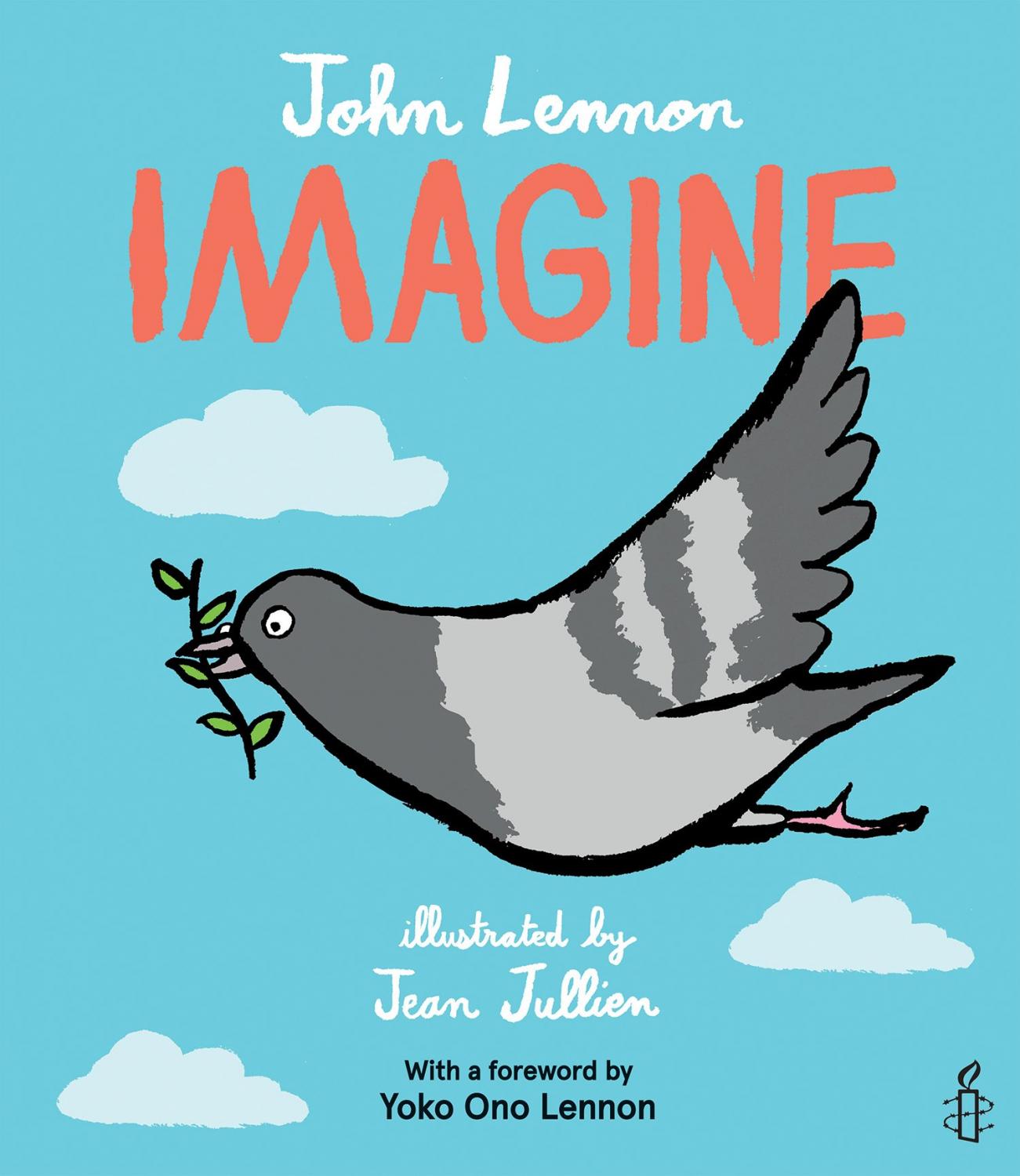
Be a King: Dr. Martin Luther King Jr.’s Dream and You
Written by Carole Boston Weatherford, Illustrated by James E. Ransome
Kids and parents, have you ever wondered how to take charge and change the world? It can involve modeling one’s self after the King -- Martin Luther King, Jr., that is. It begins by enjoying creation and keeping the faith of one’s ancestors (as with, say, a family reunion), knowing that bigotry hurts, and remembering what it felt like when we were treated unfairly even at a young age (and forcibly stopped from playing with others with different skin colors than ours). To model ourselves after King, we need to admit when we’ve done wrong, to say sorry and sincerely mean it (especially when we have caused mischief and mayhem harmful to others). Also, we need to be conscious of divisions sown between people that we’ve experienced and really know should be there. As readers turn page after page, another piece of King’s wisdom is introduced with the positive affirmation, “You can be a King.” The message is movingly illustrated and easy to understand.
A brief, helpful history of King and his accomplishments are provided in the author’s note at the book’s end. Illustrations by award-winning James Ransome help make this is a truly awesome, simple introduction to King for young readers, from start to finish. (Ages 3-8 years)
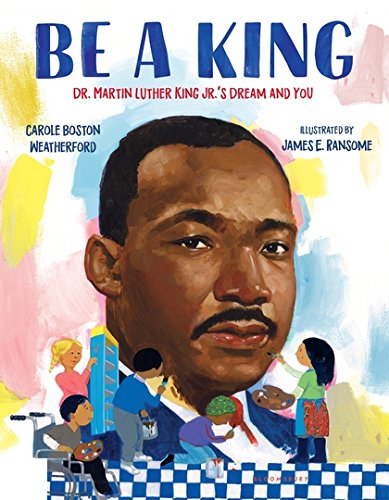
The Bear and the Star
Written by Lola M. Schaefer, Illustrated by Bethanne Andersen
One early December morning, Bear wakes up and sees a new, special star that tells him it is time to begin searching. But searching for what? Bear, it turns out, is searching for a strong, tall tree, “that would be the center/of all to come.” When Bear finally comes upon the most majestic evergreen on the top of a windswept hill, he roars and bellows to the East, West, North, and South. But how can his call be heard across the ends of the earth by other creatures? It can be heard simply because, “…it was time…” As Bear continues to roar and lumber through the woods, other wild inhabitants start to follow him, curious and intrigued. Eventually people of all walks of life stop their work as well and start their quests as well, realizing also that, “It was time.” But what exactly is it time for all the living creatures to celebrate and discover, as Bear has already found the evergreen tree?! Read this wonderful, warm story to find out.
A former elementary school teacher, author Lola M. Schaefer is the author of Because of an Acorn and Lifetime. Illustrator and painter Bethanne Andersen, also a professor at Brigham Young university, has illustrated several children’s books, including A Packet of Seeds, and Seven Brave Women. Young readers and parents will like Bear’s expressive eyes and the natural beauty of Bear’s world and that of other creatures, and how Andersen uses perspective to make readers feel as if they are there in the book enjoying the heavens and the special, magnificent tree close up. (Ages 4-8 years)
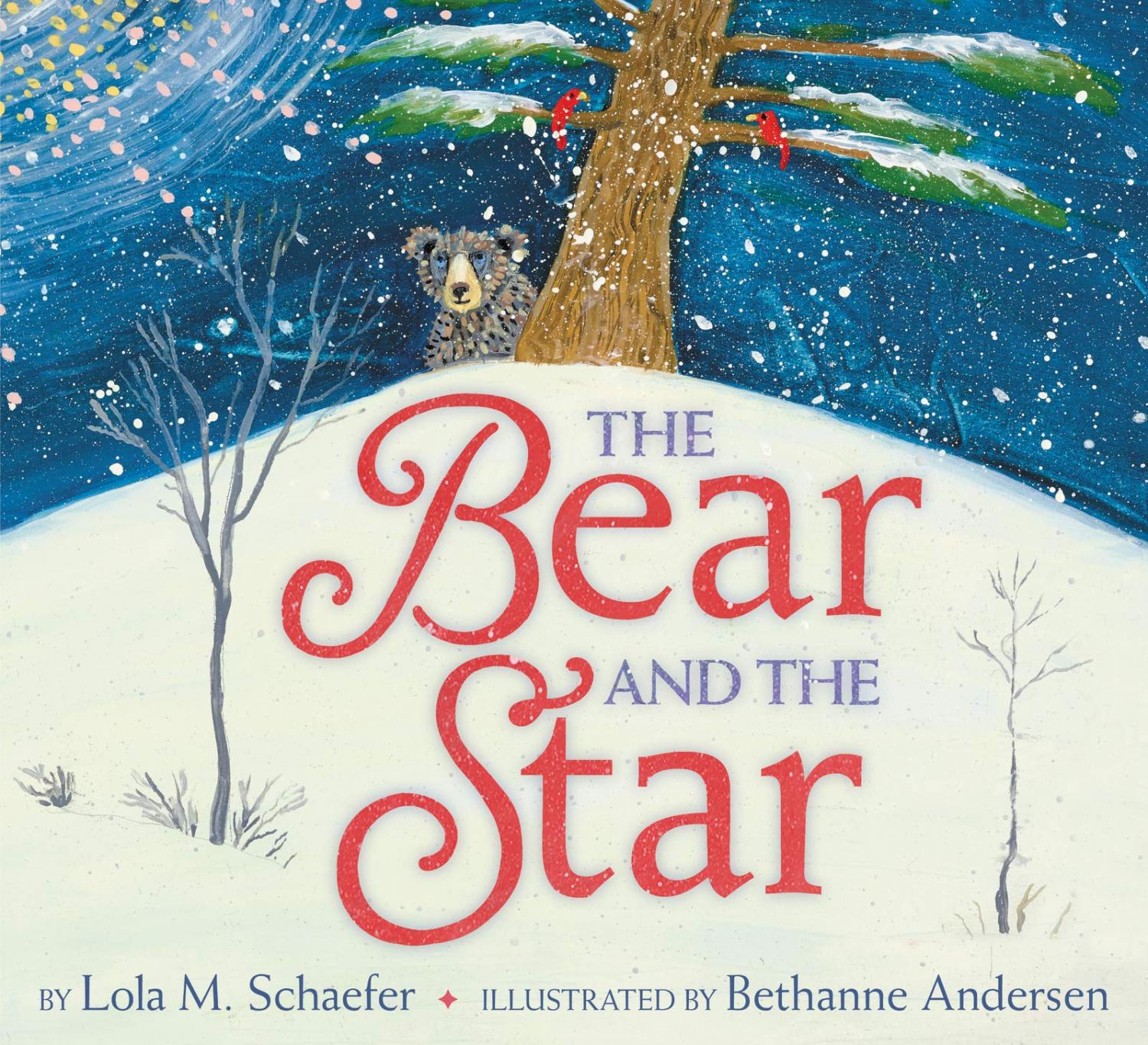
Every Month is a New Year
Written by Marilyn Singer, Collage Illustrations by Susan L. Roth
We all know and love to celebrate New Year’s at midnight on December 31st and the next day on January 1st. What if we could enjoy the New Year every month of the year?! In charming verse and eye-catching collages, Marilyn Singer shows us how the new year is celebrated around world in many countries and cultures, with festivities that are secular, religious, or a combination of both. There are the famous Midnight Ball Drop on New Year’s Eve in New York City, Hogmanay in Scotland, the Two New Years in Russia that two sisters can enjoy over two weeks, and the Lunar New Year and Dragon Dance in China, and others. My personal favorites are Songkran, celebrated in April in Thailand with water fights, and Enkutatash, celebrated in September in Ethiopia with springtime daisies.
Organized in a calendar format, young readers also can be immersed in Susan Roth’s collage art, featuring people with the most magnificently drawn eyes and expressions taking part in festivities both small and large, quiet and loud. There’s also a handy glossary of definitions and additional sources for the even more curious minds and researchers. (Ages 4-9 years)
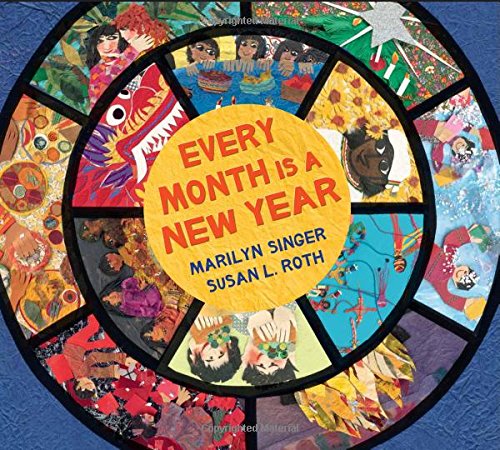
Binny’s Diwali
Written by Thrity Umrigar, Illustrated by Nidhi Chanani
Binny is nervous because she has to share what she knows about Diwali, the five-day Hindi Festival of Lights, with her class. On the big day, wearing new clothes and with a stomach full of breakfast, orange sweet jalebis, and milky pedas, Binny feels almost ready. But when the moment comes to share in front of the class, she’s tongue-tied. But then, after some encouragement from the teacher, and by remembering what Mom had told her about lighting little oil lamps known as diyas, known for bringing good luck into homes and for chasing away the darkness – Binny knows all of what she needs to say! Read the rest of the story to find out what Diwali is about!
There’s also an afterward providing young readers the legend behind Diwali (or Deepavali), an outline of what people do during the five day celebration, and personal notes from the author and illustrator on how they enjoyed the holiday while growing up in India alongside others of diverse faiths and backgrounds, as well as in the United States. San Francisco-based illustrator Nidhi Chanani brings Binny and this wonderful holiday to life in beautiful vivid colors of night and light. (Ages 4-8 years)








